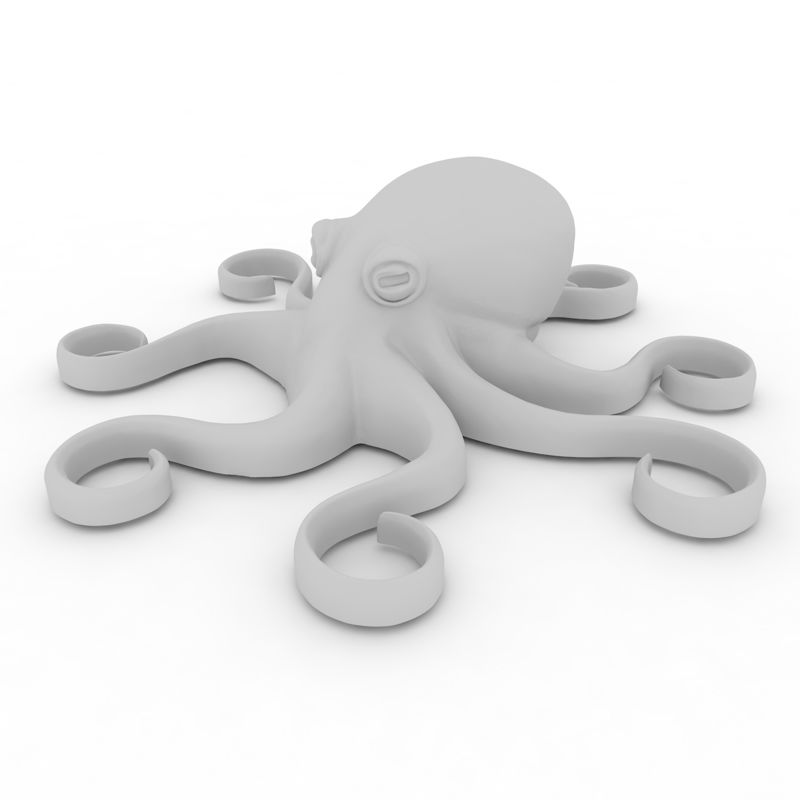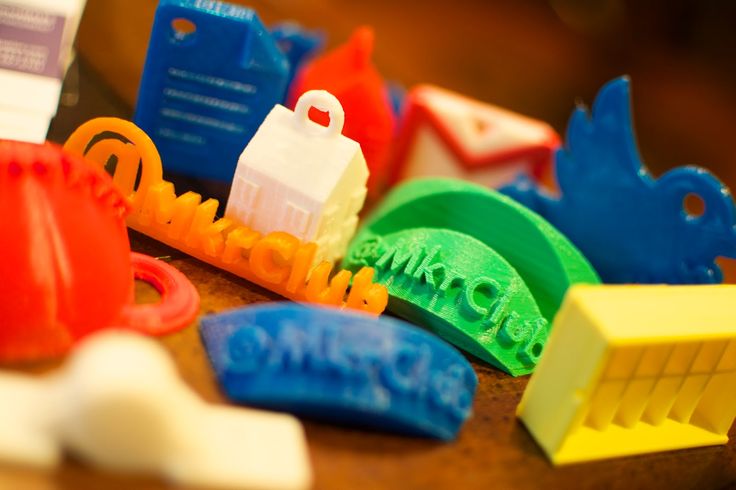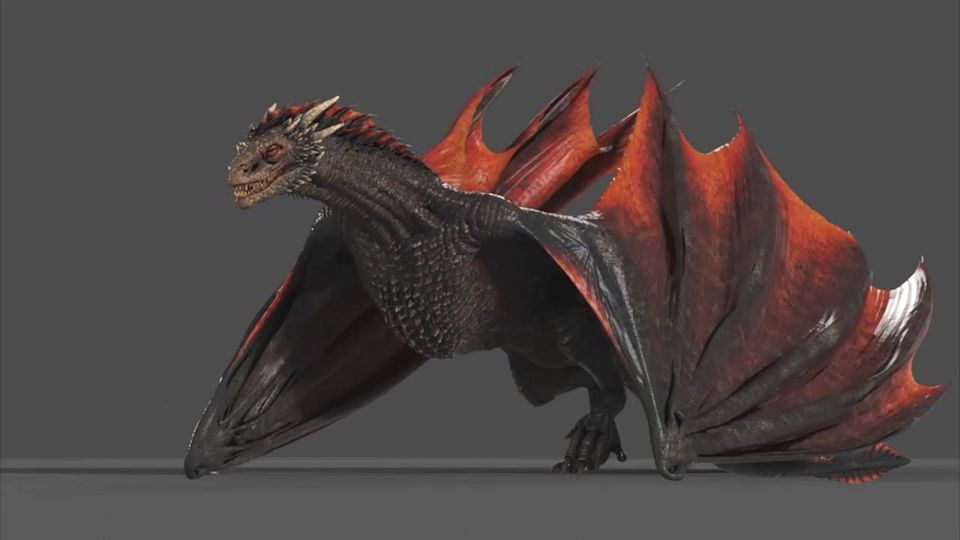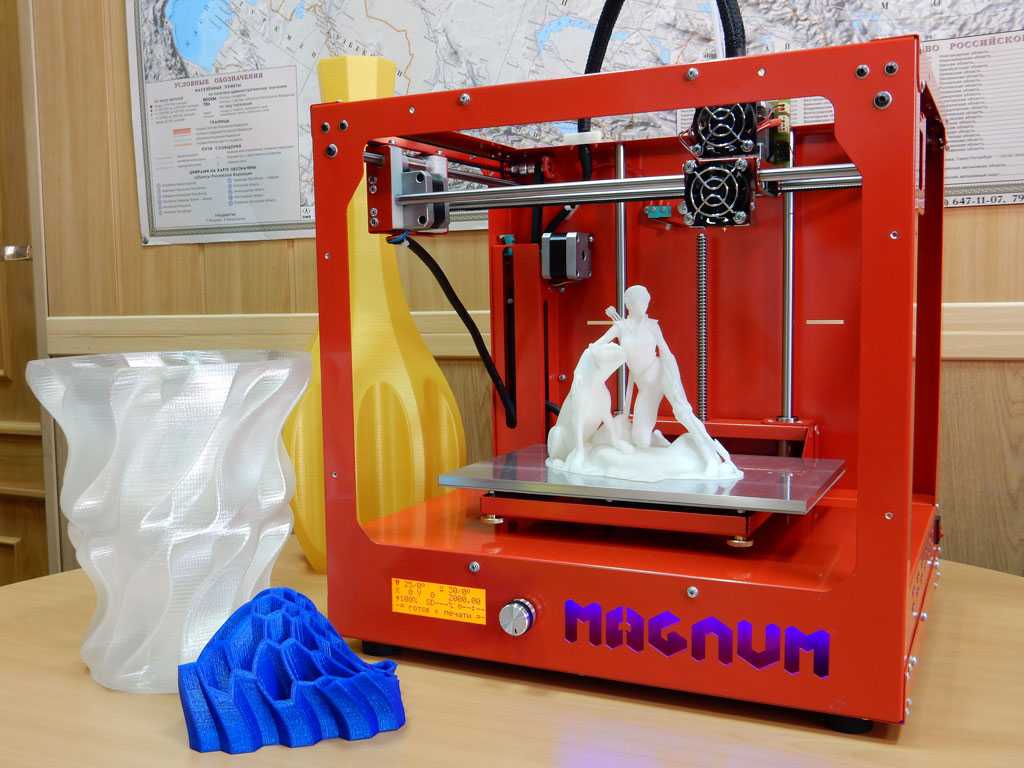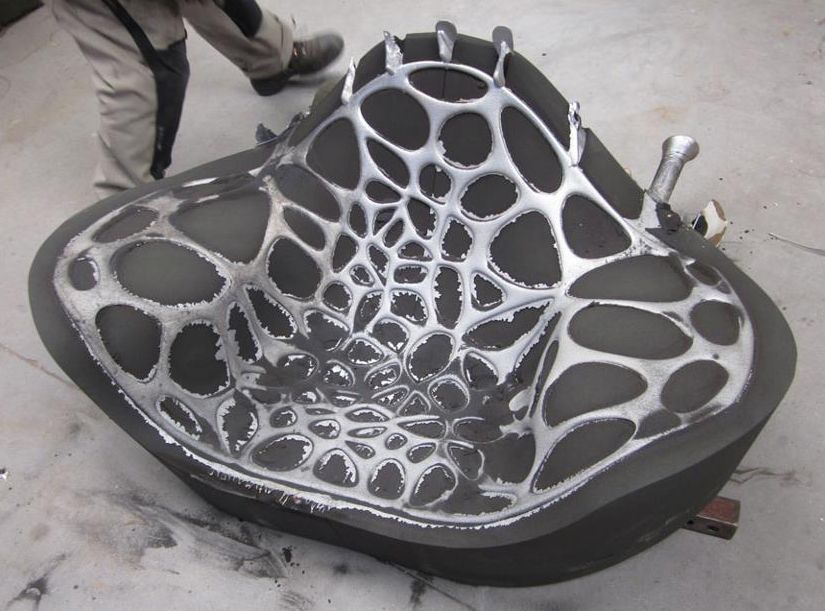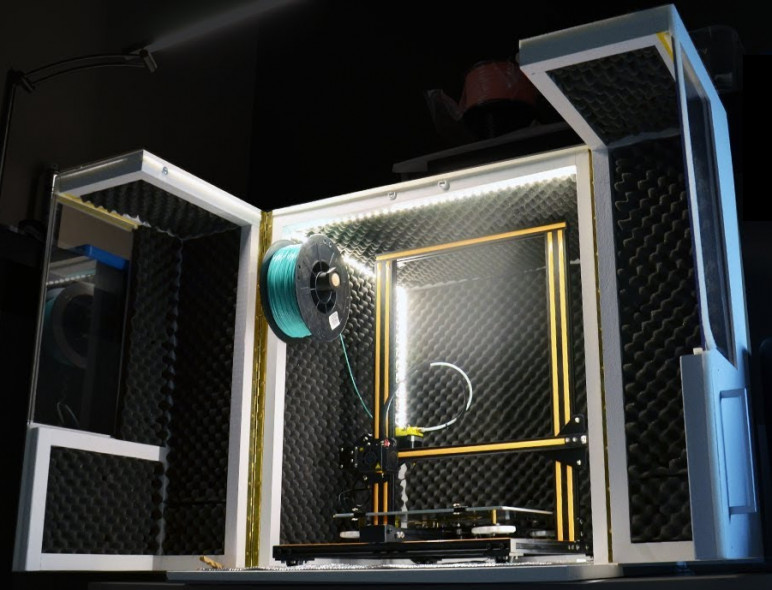3D printer high detail
Best High Resolution 3D Printers 2022: Complete Buyer's Guide
Resolution is a much-misunderstood aspect of accurate 3D printing, and there are many important factors that affect print quality beyond just layer height. This article recommends the best high-resolution 3D printers, explains the factors making up a high-resolution 3D printer, and the benefits and drawbacks.
Typically within 3D printing resolutions, the Z-axis resolution, or Z-resolution, is most discussed. This is the vertical resolution and means the minimum layer height or thickness possible for a 3D printer.
Small layers mean better resolution, and better surface quality parts with smoother surfaces and crisper edges.
Therefore, having a high-quality 3D printer that can print with small layer heights can be a great advantage. However, this is not the only factor that affects print quality, with a host of others affecting whether a high-resolution 3D printer actually prints accurate, smooth parts.
Accurate 3D printers we recommend
| Name | Max build volume (mm) | Min layer height | Price | Where to buy |
|---|---|---|---|---|
| Ender 3 V2 | 220 x 220 x 250 | 0.1 mm | $279 | Creality Store here |
| Elegoo Mars 2 Pro | 129 x 80 x 160 | 0.01 mm | $280 | Elegoo here |
| Anycubic Photon Mono 4K | 132 x 80 x 165 | 0.01 mm | $299 | Anycubic Store here |
| Elegoo Mars 3 | 143 x 90 x 165 | 0.01 | $349 | Elegoo here |
| Prusa i3 MK3S | 250 x 210 x 200 | 0.05 mm | $749 / $999 | Prusa Store here |
| Formlabs Form 3 | 145 x 145 x 185 | 25 microns | $3,499 | Formlabs Form 3 |
| Ultimaker S3 | 230 x 190 x 200 | 20 microns | $3,850 | Dynamism Store here |
Resolution in 3D printing: X, Y and Z resolution
Z-resolution corresponds to the layer height of a printed part. However, the X and Y-planes are also very important in a high resolution 3D printer.
However, the X and Y-planes are also very important in a high resolution 3D printer.
The X and Y axes control the 2D parts of the print: those within each 2D layer. The Z then adds multiple layers, responsible for height – the third dimension. Though they are all axes, the XY and Z axes are controlled by two separate systems, with some FDM printers having far more accurate Z-resolutions than XY.
The X and Y resolutions are the smallest movements the printer’s print head (the projector, extruder or laser, depending on technology) can make within a layer – horizontally.
Different 3D printing technologies are capable of better resolutions than others. For example, SLA 3D printers are more accurate than FDM 3D printers, even though their Z-resolutions can look similar on paper. This is mostly down to the better XY resolutions resin 3D printers can print with, leading to smoother surface areas, with the best resin printers able to print parts with barely noticeable layer lines.
However, other factors can also significantly affect print quality.
Other factors that affect print quality
- Nozzle size: smaller nozzles on FDM 3D printer extruders can print more intricate and precise details. Standard nozzles are typically 0.4mm, though you can get far smaller 0.1 or 0.2mm nozzles for small and accurate details. They also work better for printing supports and overhangs.
- Stability of frame & vibrations: a sturdy, heavy metal frame that anchors the printer and print bed to the ground is less affected by vibrations and other extraneous factors that can affect print quality.
- Material: different materials are more accurate and precise than others, or are easier to print successfully than others.
- Technology: for example, SLA printers are more accurate than FDM, and PolyJet offers some of the best precision in 3D printing.
- Slicer and printer settings: your 3D slicer settings will make all the difference in print quality, and even the most high resolution 3D printers will print poor quality models if not optimized.

When do high quality 3D printers make the most difference?
If you plan on 3D printing a very basic structure like a cube, whether you use a high quality 3D printer, or use large or small layers, will make no difference. In fact, using small layer heights will just make the exact same print take far longer.
For these very basic models with few intricate parts or details, a standard cheap 3D printer will work almost as well as an industrial, high-resolution 3D printer that costs 20x the price.
However, high-quality precise 3D printers make a significant difference in more complex parts that have diagonal or arched lines or sides, or have embossing and engravings.
Especially in curved or diagonal parts, the lower the layer height and more accurate the printer, the less stepped these features will appear, and the smoother they will look, even up close.Very high-resolution 3D printers such as resin printers are commonly used to 3D print jewelry molds, such as this 3D printed ring.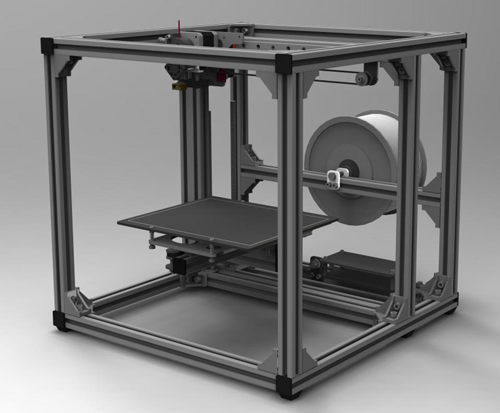 Source: Shapeways.
Source: Shapeways.
Moreover, if you are printing a small part, for example 3D printing a miniature or tabletop model, using an accurate printer with very small layer heights can be worth it, as even if it takes several times as long this still won’t take more than an hour.
The best high-resolution 3D printers
Now we have illustrated the components that make up a high-quality 3D printer, here are some recommendations.
High resolution and quality here are relative, meaning that we have chosen those in each price range that excel – a $200 3D printer cannot compete with an industrial 3D printer costing $20,000, but it may be the best in its price range.
3DSourced is reader-supported. When you buy through links on our site, we may earn an affiliate commission. Learn more
Ender 3 V2 – accurate 3D printer for under $300
- Price: $279 – Available on Creality Official Store here / Available on Amazon here
- Build volume: 220 x 220 x 250 mm
- Type of 3D printer: FDM 3D printer & DIY 3D printer
- Minimum layer height: 0.
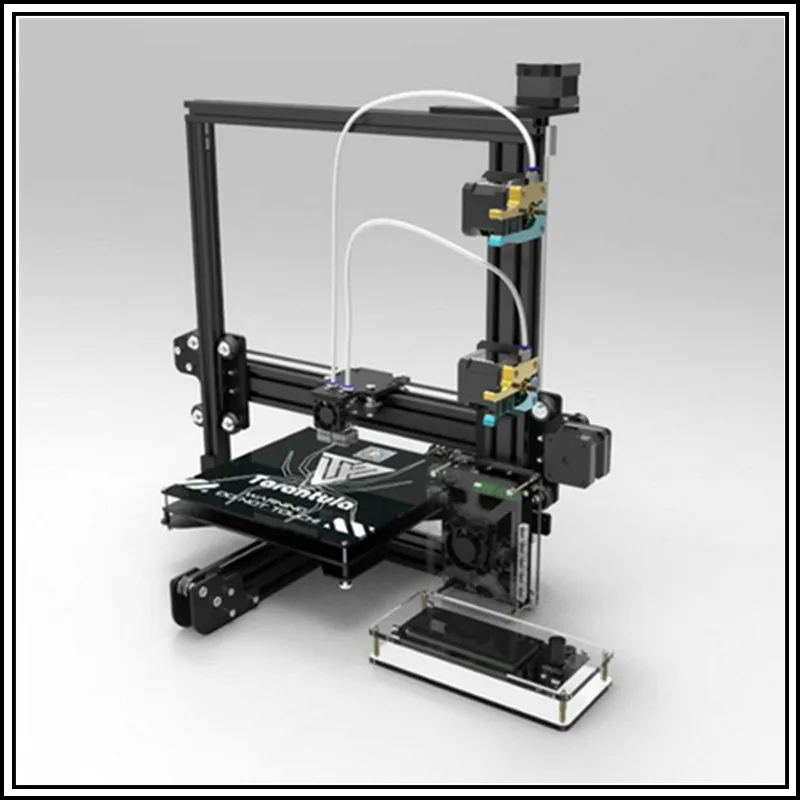 1mm
1mm
Just as the original Ender 3 was starting to get long in the tooth, Creality swooped in with the Ender 3 V2. A well-thought-out printer, the Ender 3 V2 remedies many of the misgivings of its predecessor while still keeping the asking price affordable to even the most budget-restrained makers.
The belt tensioners, 4.2.2 32-bit mainboard, and silent stepper motor drivers do a lot to present what feels like a far more modern printer compared to the Ender 3.
In the context of low-cost high-resolution 3D printer performance, the Ender 3 V2 spec sheet doesn’t exactly wow, with a middling 100-micron layer resolution. But, don’t be fooled; high-resolution printing is defined by more resolution alone.
In action, the Ender 3 V2 assembles with a level of accuracy that feels inordinately good for a low-cost FDM printer. With few visible, warping, or layering issues with an excellent overall quality for larger parts and respectable results for smaller, detailed parts. And, coupled with that is a suitably large build volume – 220 x 220 x 250 mm to be exact – for larger projects and even small-scale batch printing.
And, coupled with that is a suitably large build volume – 220 x 220 x 250 mm to be exact – for larger projects and even small-scale batch printing.
For the price, you additionally get to play with a decent range of materials – PLA, ABS, PETG, TPU. The only caveat is you’ll need to stick to more straightforward prints, those relatively free of intricate embossing, minute detail, tight arches, and the like.
In our experience, the Ender 3 V2 shines best when used to create household items such as plant pots or, say, vases, figurines, toys, accessories, and similar items. We’d wager it also packs in enough printing aptitude for a modest business selling non-geometrically complex products.
Be warned; the Ender 3 V2 is very much a hobby kit printer, requiring its fair share of tinkering to perform at its best. Curious beginners up for a challenge and seasoned makers should find this a gratifying part of the printing process, but green newcomers may prefer an option a little lighter on the ‘hands-on’ aspects.
Elegoo Mars 2 Pro
- Price: $299 – Available at Elegoo store here / Available on Amazon here
- Build volume: 129 x 80 x 160 mm
- Type of 3D printer: LCD 3D printer
- Z-axis accuracy: 0.00125 mm, XY Resolution: 0.05 mm
The Elegoo Mars and Anycubic Photon range have both revolutionized low-cost, high-resolution 3D printing for hobbyists and businesses worldwide. The Elegoo Mars 2 is capable of such accurate resin models that it is increasingly used for casting 3D printed jewelry molds before having them made into gold or other metal rings, bracelets, and chains.
Read more: our Elegoo Mars 2 Pro review & test prints
As an MSLA printer, the Elegoo Mars prints resin models that outperform its FDM counterparts, with high resolution 3D prints that barely show their layers. The 6-inch 2K LCD screen makes for fast 3D printing, able to cure a layer every 2 seconds.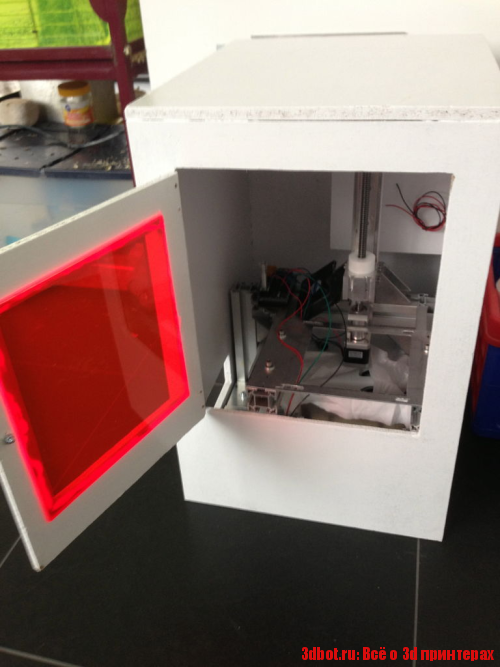
Additionally, the Mars 2 Pro’s CNC machined aluminum structure improves stability, eliminating outside vibrations that could affect a precise 3D printed model’s detailed features. Moreover, the new and improved build plate is designed for better adhesion and better quality outcomes.
The printer is accessible in 12 languages, so non-English speakers needn’t worry, and if you do have any problems with your Elegoo Mars 2 Pro, the company will replace it with its 1-year warranty. Overall, it’s a great, high-quality 3D printer for cheap and precise resin part production.A dinosaur head we 3D printed when we reviewed the Elegoo Mars 2 Pro.
Anycubic Photon Mono 4K
- Price: $299 – Available at Anycubic Official Store here / Available on Amazon here
- Build volume: 132 x 80 x 165 mm
- Type of 3D printer: LCD 3D printer
- Z-axis accuracy: 0.00125 mm, XY Resolution: 0.035 mm
Yet another iterative upgrade to a respected family of resin printers, the Anycubic Photon Mono 4K is another impressive option for those high-res 3D printer heads out there. It’s no understatement to count the Anycubic Photon Mono 4K among the top cheap high-resolution 3D printers out there.
It’s no understatement to count the Anycubic Photon Mono 4K among the top cheap high-resolution 3D printers out there.
Under the hood, the Anycubic Photon Mono 4K sports, you guessed it, a 4K LCD panel capable of a pixel resolution of 35 microns, a 15-micron improvement on its predecessor. In layman’s terms, this equates to a smooth finish and fine detail in every print, both immediately apparent to the naked eye.
Imperfections are near indistinguishable, and, dare we say it; the results are as close to perfection as we’ve seen in this price range in the overwhelming majority of prints. The Anycubic Photon Mono 4K also nips through prints with a more-than-respectable sub 2 second layer cure time.
For us, the printer brims with hobby potential. We’d be hard-pressed to pinpoint an application where it doesn’t impress. That said, the Anycubic Photon Mono 4K comes into its element with 3D models and similar display items thanks to its propensity for carving out detailed features.
Much like other resin printers, the Anycubic Photon Mono 4K comes with its fair share of mess and requires strict adherence to a regular cleaning regimen. The absence of a resume function and an occasionally temperamental native slicer feel like unfortunate oversights. But, these are minor gripes for an otherwise excellent low-priced, small form factor resin printer.
Elegoo Mars 3 – Best Cost-Effective Resin Pick
- Price: $349 – Available at Elegoo store here / Available on Amazon here
- Build volume: 143 x 90 x 165 mm
- Type of 3D printer: LCD 3D printer
- Z-axis accuracy: 0.00125 mm, XY Resolution: 0.035 mm
The Elegoo Mars is back and arguably better than ever, with a new numeral slapped on for good measure. Fast, beautifully detailed, compact, and cost-effective, the Elegoo Mars 3 also sports the specs we like to see in high-resolution-geared resin printers, namely a 6. 6-inch 4K Ultra Monochrome LCD and a razor-thin 35-micron resolution.
6-inch 4K Ultra Monochrome LCD and a razor-thin 35-micron resolution.
Marketing and technical blather aside, Elegoo Mars 3 delivers impressively detailed results with clean edges and on-point accuracy suitable for even the most demanding resin projects. A larger build volume than the Mars 2 Pro, tallying up to 143 x 90 x 165 mm, also lends itself to larger prints while keeping up those minute features and finer details.
We’re particularly impressed with how well the printer fares when tackling figurines, toys, and models, even what we deem large ones for a resin printer. Best of all, the Elegoo Mars 3 sticks to the Mars tradition of no-nonsense printers that perform to the same high standard day-in, day-out. In other words, a workhorse.
Despite some reservations about the flimsy lid and the lack of features like air filtration and Wi-Fi connectivity, we highly recommend the Elegoo Mars 3 for makers, hobbyists, and businesses looking for a cheap high-resolution 3D printer. Note that the Elegoo Mars 3 is tied to the ChiTuBox slicer and won’t work with third-party alternatives.
Note that the Elegoo Mars 3 is tied to the ChiTuBox slicer and won’t work with third-party alternatives.
Prusa i3 MK3S+
- Price: $749 kit / $999 assembled – Available on Prusa Store here
- Build volume: 250 x 210 x 200 mm
- Type of 3D printer: FDM 3D printer & DIY 3D printer
- Minimum layer height: 50 microns
Balancing high resolution and workhorse-like reliability, the Prusa i3 MK3S+ is known for being one of the best 3D printers around. Available as a 3D printer kit or pre-assembled for a few hundred dollars extra, this FDM printer can print precise 50-micron layers, and do so time and time again without fail.
For better XY resolutions and part quality, resin printers like the Elegoo Mars are still better, but the Prusa balances still excellent quality, with wider material compatibility – from ABS to PLA to Polycarbonate to Nylon! – and can even be adapted into a color 3D printer that can print 5 colors simultaneously if you purchase the Multi Material Upgrade Kit.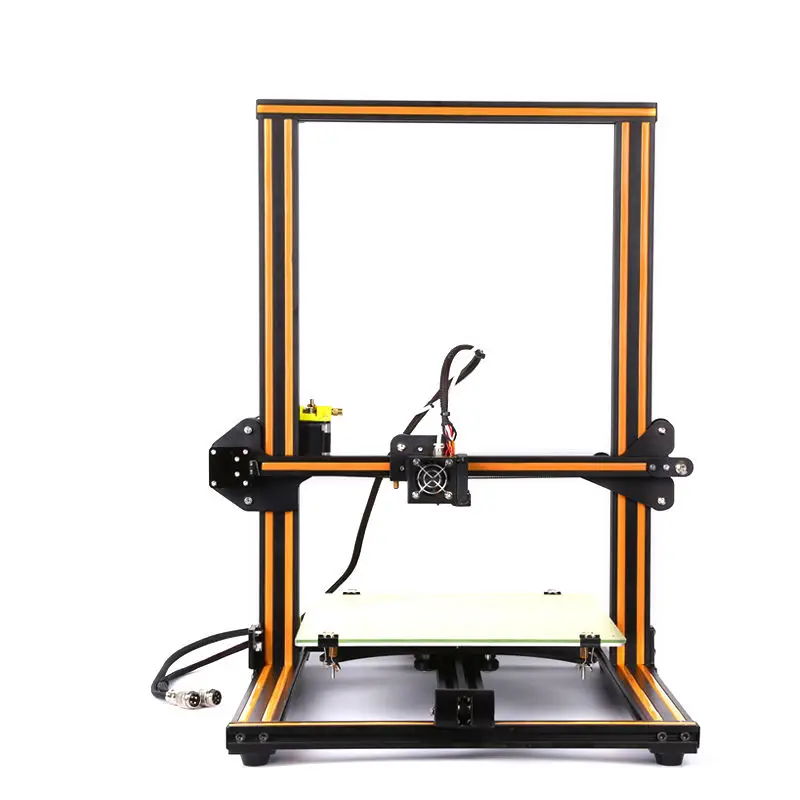
- You can purchase the Multi Material Upgrade Kit from Prusa here.
It’s fast, always improving, and balances excellent resolution with dogged grit and reliability.
Formlabs Form 3
- Price: $3,499 – Available on Dynamism Store here
- Build volume: 145 x 145 x 185 mm
- Type of 3D printer: SLA 3D printer
- XY Resolution: 25 microns
The leading prosumer resin 3D printing company, Formlabs printers are now used extensively across the jewelry, dental, medical and hearing aid sectors.
Looking at the numbers underpinning the Formlabs Form 3 – chiefly, a 145 x 145 x 185 mm build volume and 25-micron resolution – isn’t exactly a head-turner. However, Formlabs’ innovative LFS tech is the type of innovation we like to see. The real sophistication lies in just how easy the printer is to use. With the Formlabs Form 3, the onus is on the machine to do its thing, no faffing and no babysitting required.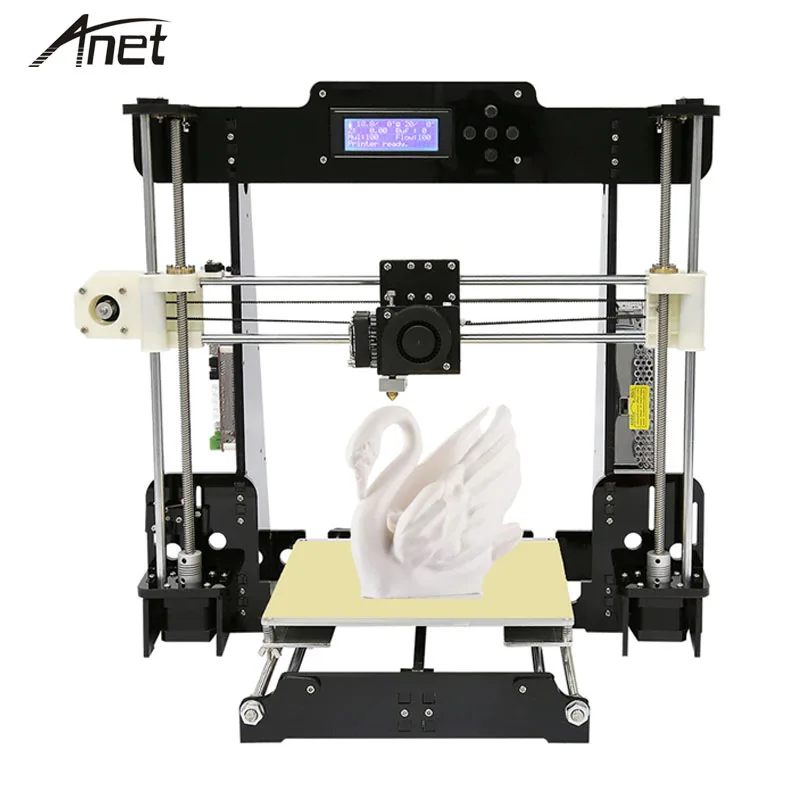
And, the results follow. Equipped with high-quality resin, the Formlabs Form 3 performs exceptionally to yield beautifully finished and detailed prints suitable for commercial ends. Print failures are all but nonexistent; you’d need to physically shake the machine during a print to trigger anything resembling errors.
You do pay a hefty premium for the pleasure of owning a Formlabs Form 3. However, the expense is quickly recouped in time saved alone by the set-a-task-and-forget nature of the printer, something that could conceivably prove invaluable in a fast-paced commercial environment. For small to medium-sized businesses requiring small-batch failsafe precision models along with prototyping, there’s little out there to rival the Formlabs Form 3.
Overall, for precise 3D printing, the Form 3 is one of the highest resolution and quality 3D printers out there.
Ultimaker S3
- Price: $3,850 – Available on Dynamism Store here / Available on Matterhackers here
- Build volume: 230 x 190 x 200 mm
- Type of 3D printer: FDM 3D printer & dual extruder 3D printer
- Minimum layer height: 20 microns
Smaller, but every part as technically brilliant as the S5, the Ultimaker S3 is capable of incredible 20-micron layer heights that are so small you’ll struggle to see them. Though this slows down print time by increasing the number of layers in a part, the resulting model will have unmatched quality compared to almost any other FDM printer.
Though this slows down print time by increasing the number of layers in a part, the resulting model will have unmatched quality compared to almost any other FDM printer.
As well as the fantastic precision, the Ultimaker S3 is also a dual extruder 3D printer, allowing for the production of precise, multi-colored or multi-material 3D prints, and as a result is used heavily in creating architectural building model prototypes before building work begins.
- For those interested in architectural model production, view our ranking of the best architecture software.
The printer is easy to use, easy to print with – Ultimaker also own Cura, the most popular 3D slicer – and offers fantastic 20-micron precision with a wide variety of materials compatible, including carbon fiber. Overall, the printer speaks for itself, and proves itself as one of the best high resolution 3D printers in FDM.
Credits: featured image source: flashforge-eu.com.
Advantages of a High Resolution 3D Printer
- Better quality: high resolution makes for smoother surface finishes, with great details and aesthetics on parts.
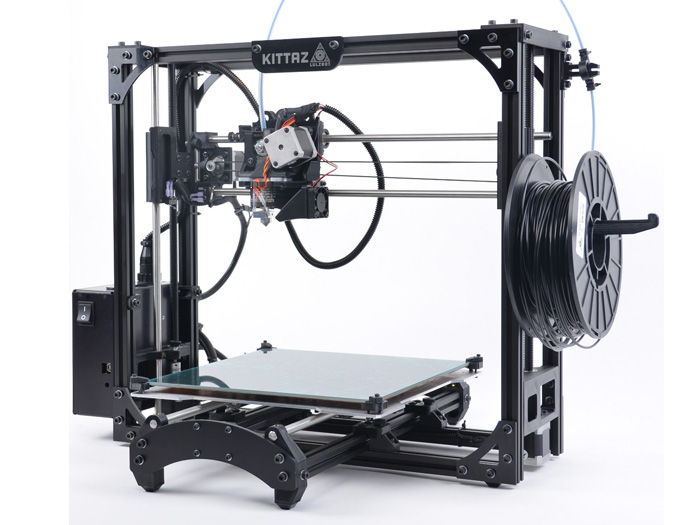
- The only way to get fine details: models that have arches and sharp diagonal details can look very jagged in higher layer heights, with low resolution 3D printers unable to adequately print these details.
Disadvantages of an accurate 3D printer
- Perfect settings required: increased precision requires perfect calibration, the perfect temperature settings to avoid imperfections in the filament or resin, and the right heated bed temperature and adhesion on the print bed. Any errors here can create imperfections in the print.
- Much slower: printing with 25-micron layer heights takes four times as long as 100-micron layer heights, as four 25-micron layers equal the height of one 100-micron layer. For large and complex models, prints can take days.
- Higher chance of print failure: the more layers a model has, the more opportunities there are for errors to occur – which could render the part useless.

High-Resolution 3D Printing Technologies
Some 3D printing technologies considered high-resolution include:
FDM – Fused Deposition Modeling
FDM, or Fused Deposition Modeling, is the most popular and common technology used for high-resolution printing. The process involves depositing melted filament in layers on a fixed build platform using a heated extruder to create models. FDM falls on the lower end of the high-res spectrum and is generally favored as a low-cost alternative to more expensive technologies. FDM printers commonly offer resolutions in the 50 to 200 microns range.
Resin (SLA, DLP, LCD)
Photopolymerization, commonly known as resin 3D printing, involves projecting a laser or light source to cure liquid light-sensitive resin into layers. Specific technologies include Stereolithography (SLA), Low Force Stereolithography (LFS), Masked Stereolithography Apparatus (MSLA), and Digital Light Processing (DLP). Resin printers commonly hit layer resolutions as low as 25 to 35 microns.
MJF – Multi Jet Fusion
Multi-Jet Modeling, or Material Jetting, uses inkjet print heads to jet melted materials layer by layer to create a 3D part or model. Expensive and highly accurate, MJF printers are the reserve of large businesses with deep coffers.
PolyJet – Photopolymer Jetting
Printers that employ PolyJet, or Photopolymer Jetting, rely on layers of photo-sensitive liquid photopolymer resin jetted via print heads then cured thanks to a UV light source to create prints. Much like MJF, PolyJet involves considerable expense, although the printers are generally smaller in size.
High-Resolution 3D Printer FAQs
Are High-Resolution 3D Prints Stronger?
No, the opposite. As a general rule, thicker layers (or a lower resolution) generate tougher results. This is because they minimize the number of contact points between layers. Fewer layers interfacing with one another means a lower likelihood of bond strength issues.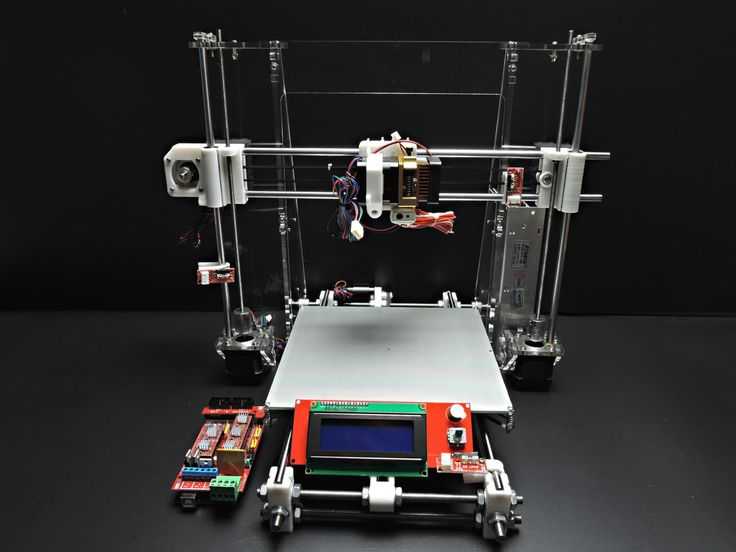
But, print strength relies on many factors, including layer adhesion and height, extruder and bed temperature, material quality and type, and the printing technology employed. A definitive answer is more related to the specific printer than the resolution. A capable device, like any of the best high-resolution 3D printers, produces reliable parts at higher resolutions.
What Is High-Resolution 3D Printing?
The answer varies greatly depending on who you ask. For the sake of simplicity, high-resolution 3D printing is best described as the process of printing parts with higher overall quality – whether that be smoothness, finish quality, detail, or model accuracy – than you’ll typically find in the 3D printing space.
What Can You Do With a High-Resolution 3D Printer?
High-resolution 3D printing suits a vast swathe of applications. In the commercial field, companies favor high-resolution printing in areas such as dentistry, jewelry, biomedicine, and all manner of functional prototyping where precision is critical.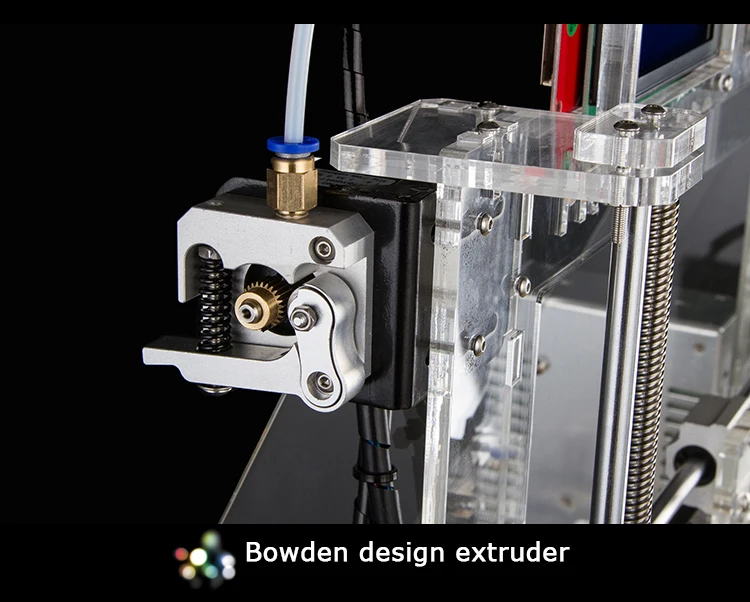 In the hobby space, makers turn towards high-resolution printing for projects that require fine detail, such as figurines, modeling, and other decorative pieces.
In the hobby space, makers turn towards high-resolution printing for projects that require fine detail, such as figurines, modeling, and other decorative pieces.
What Effect Does 3D Print Resolution Have on Speed?
Higher resolutions decrease speed.
Print speed relates to how fast a printer deposes each layer. Since high-resolution printing is synonymous with thinner layers, the print speed is generally slower than lower-res printing. High-resolution 3D printing sacrifices print speed in favor of accuracy. Exact timings depend on the desired resolution, the technologies underpinning the printer in use, such as resin or MJF, and the complexity of the model.
We also have an article about how to maximize dimensional accuracy and precision in 3D printing.
8 Best High Resolution 3D Printers (2022 Updated)
- Last Updated On November 1, 2022
- Pat Nathaniel
When looking for a 3D printer, you look at features like build volume, extruder type, nozzle, build plate to suss out the best.
But in the end, if we’re honest, all we want are picture-perfect prints printed quickly.
And that’s what this article highlights: the best FDM and resin 3D printers that produce the highest resolution prints in the shortest amount of time.
Elegoo Mars 2 Pro
Get Discount Now
Check Latest Price
Creality Ender 3 V2
Get Discount Now
Check Latest Price
Ultimaker S5
Check Latest Price
Table of Contents
- The Best High Resolution 3D Printers (FDM)
- The Best High Resolution 3D Printers (SLA/Resin)
- FDM 3D Printers:
- 1. Creality Ender 3 V2 (Best Choice)
- 2. Prusa I3 MK3S (Best for Beginners to Advanced Users)
- 3. Dremel DigiLab 3D45 (Best for Education)
- 4. Ultimaker S5 (Premium Choice)
- SLA/Resin 3D Printers:
- 5. Elegoo Mars 2 Pro (Best Value)
- 6. Phrozen Sonic Mini 4K (Beginner Friendly)
- 7. Anycubic Photon Mono X
- 8.
 Formlabs Form 3 (Most Accurate 3D Printer)
Formlabs Form 3 (Most Accurate 3D Printer)
- What is Resolution in 3D Printing? X, Y, and Z Resolution
- Other Factors That Affect Print Quality
- Material
- Printer Stability
- Type of Printing
- Temperature
- Slicer settings
- Nozzle size
- When Do High-Quality 3D Printers Make the Most Difference?
- Advantages and Disadvantages for High Resolution 3D Printers
- Advantages
- Disadvantages
- SLA VS FDM
The Best High Resolution 3D Printers (FDM)
1. Creality Ender 3 V2 (Best Choice)
2. Prusa i3 MK3S (Best for Beginners to Advanced Users)
3. Dremel DigiLab 3D45 (Best for Education)
4. Ultimaker S5 (Premium Choice)
The Best High Resolution 3D Printers (SLA/Resin)
5. Elegoo Mars 2 Pro (Best Value)
6.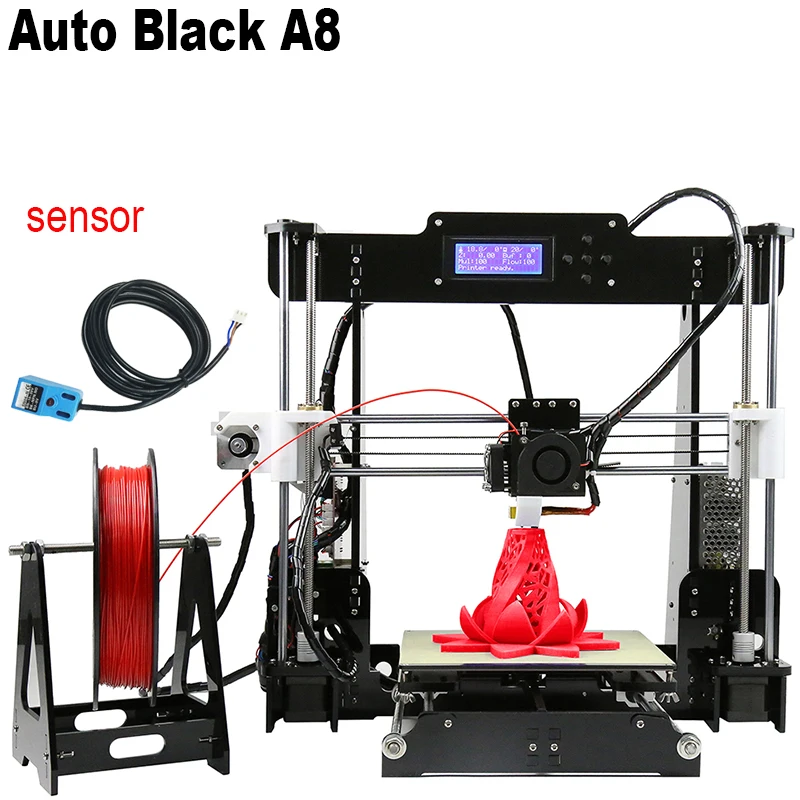 Phrozen Sonic Mini 4K (Beginner Friendly)
Phrozen Sonic Mini 4K (Beginner Friendly)
7. Anycubic Photon Mono X (Best for Large Build Volume)
8. Formlabs Form 3 (Most Accurate 3D Printer)
FDM 3D Printers:
1. Creality Ender 3 V2 (Best Choice)3D Printer Type: FDM | Materials: PLA, ABS, TPU & PETG| Build Volume: 220 x 220 x 250 mm
Cheap. Capable. Efficient. The Creality Ender 3 series is a 3D printing staple. And the upgraded Ender 3 V2 is one of the best budget printers, capable of churning out high-resolution prints.
This world-class budget machine (yes, I used world-class and budget in the same sentence – the 3D printer is a delightful paradox) is perfect for newcomers. Once you buy this printer, you don’t need to purchase any other printer because this machine handles it all.
Stuck setting up your printer? Printing issues chipping away your happiness? Then Creality’s vast user base would be happy to solve the problem for you. The official community can be found on this site. There are plenty of Facebook groups as well.
The official community can be found on this site. There are plenty of Facebook groups as well.
Silent stepper motor drivers and a 32-bit mainboard are just some ways the V2 leveled up over its older brother, the original Ender 3 model.
The Bowden extruder in the V2 performs an admirable job of creating fantastic prints. The print resolution in the XY-axis and the Z-axis is 0.1mm.
The Ender 3 V2 comes with rare features at this price point, like a filament runout sensor and resume-printing option during a power cut. Coupled with a large build volume of 220 x 220 x 250 mm, it’s hard to find fault with this printer.
But alas, faults it does have. For instance, loading the filament into the Ender V2 was irksome. This was an issue we faced with the Ender 3 as well. And this high accuracy 3D printer requires assembly.
Don’t let the minor nitpick dissuade you, however. The Ender 3 is the best budget high resolution 3D printer.
- Produces amazing prints affordably
- Large community for support
- Filament loading is annoying
- Not plug and play
Get Discount on Creality3D
Check Latest Price
2. Prusa I3 MK3S (Best for Beginners to Advanced Users)
Prusa I3 MK3S (Best for Beginners to Advanced Users) 3D Printer Type: FDM | Materials: PLA, ABS, PET, HIPS, Flex PP, Ninjaflex, Laywood, Laybrick, Nylon, Bamboofill, Bronzefill, ASA, T-Glase, Carbon-Fibers Enhanced Filaments & Polycarbonate | Build Volume: 250 x 210 x 210 mm
The Prusa i3 MK3S, a 3D printing heavyweight, is expensive. But you get what you pay for – the printer over-delivers in terms of quality.
The printer setup can be challenging, but the gorgeous and detailed handbook shipped with the printer holds you by your hand and guides you meticulously through the whole process.
Shipped with the 3D printer are premium components like a magnetic PEI coated steel spring heated bed and a custom E3D V6 hot end.
There are two types of software included – one for beginners and the other for professionals. If you’re a beginner then you should use the Prusa Control software; you’ll find all the necessary things needed to build your prints. However, this mode lacks a vase mode.
However, this mode lacks a vase mode.
For more complex prints, advanced users should use the Prusa3D Slic3r MK3, which has a lot more functionality.
For high-resolution prints, it’s necessary to dampen vibrations during printing. The sturdy aluminum frame of the printer stops any shaking with ease, leading to better prints.
The machine handles whatever you throw at it without breaking a sweat. The layer resolution is 0.05 mm, and the print quality is better than most other printers in the market. Take a magnifying glass or a microscope, you’d be hard pressed to find flaws in the prints.
Another impressive characteristic of the Prusa is its incredibly fast printing speed of 200mm/s. Few FDM 3D printers can print so fast.
The Prusa I3 MK3S is a brand that never disappoints and delivers on all fronts.
- High-res printing
- Incredible speed for an FDM printer
- Quiet
- Expensive
Check Latest Price
3.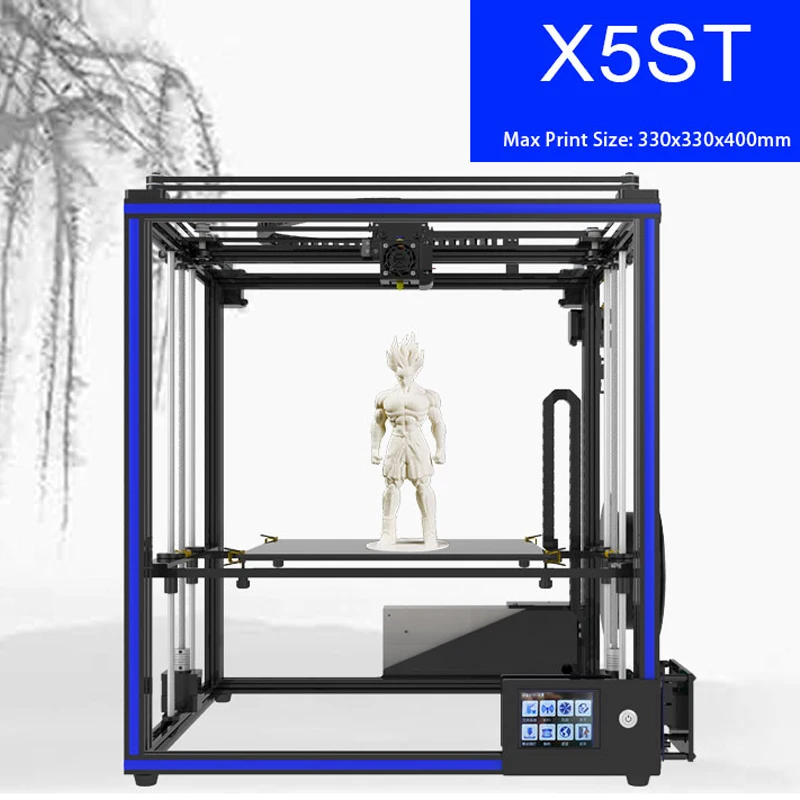 Dremel DigiLab 3D45 (Best for Education)
Dremel DigiLab 3D45 (Best for Education) 3D Printer Type: FDM | Materials: PLA, ECO ABS, PETG & Nylon | Build Volume: 254 x 152 x 170 mm
The Prusa got you excited, and now you want more premium 3D printers to ogle at before you take your pick? Then take a look at the Dremel DigiLab 3D45; it gives Prusa a run for its money.
Large prints can be printed with ease with its large build volume of 254 x 152 x 170 mm. In addition, The DigiLab Slicer software uses the open-source Cura platform, which is suitable for both beginners and advanced users.
One of DigiLab’s unique features is its ability to handle filaments that most 3D printers can’t, like polycarbonate, Nylon, and EcoABS.
The 3D printer is perfect for classrooms. In fact, it comes with a curriculum meant for students from elementary to university levels. Students can easily use the printer as the machine was designed for learning.
The DigiLab is safe for students.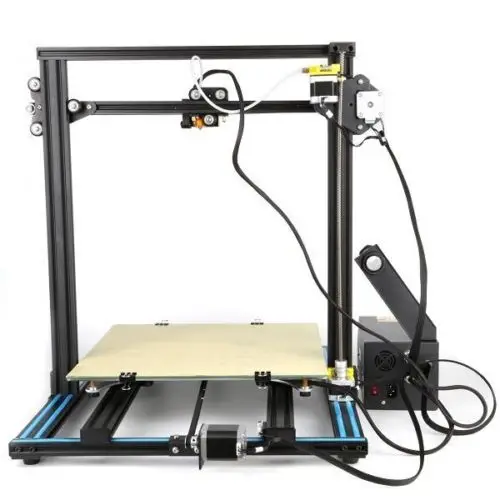 It is completely enclosed and it has a carbon filter, so you don’t have to worry about anyone inhaling toxic fumes. And there’s one more benefit with enclosed printers, they help regulate temperatures which result in higher resolution prints.
It is completely enclosed and it has a carbon filter, so you don’t have to worry about anyone inhaling toxic fumes. And there’s one more benefit with enclosed printers, they help regulate temperatures which result in higher resolution prints.
Just like the Prusa i3 MK3S, the 3D45 has an excellent resolution of 0.05 mm. And that reflects in the final prints, which look beautiful. And like the i3 MK3S, the printer excels at making high-quality prints consistently. Both printers are masters at their craft.
If you want a cheaper but equally effective Dremel printer, go for the Dremel 3D40 flex.
The 3D40 does lack a couple of features, however – it can handle only PLA while the 3D45 can handle more (like I mentioned above). The 3D40 also lacks a camera for remote monitoring of prints, a heated platform to reduce warping, and a carbon filter to eliminate fumes.
Even the best 3D printers have issues, and the 3D45 isn’t an exception. In addition to its hefty price, a major downside is its difficulty in handling third-party filaments.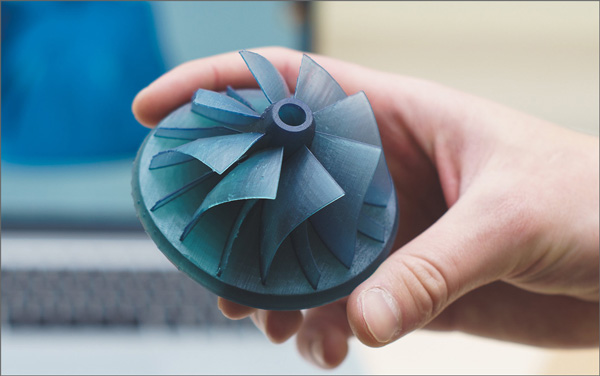 The Dremel works best with company made filament. Similar to Apple, the printer is meant to function like a closed ecosystem.
The Dremel works best with company made filament. Similar to Apple, the printer is meant to function like a closed ecosystem.
But also just like the Apple, the Dremel performs flawlessly and is worth the big bucks it asks for.
- Exceptional print quality
- Educational material
- Fully enclosed
- Expensive
- Hard to use third party filaments
Check Latest Price
4. Ultimaker S5 (Premium Choice)3D Printer Type: FDM | Materials: Tough PLA, TPU 95A, ABS, Nylon & TPU | Build Volume: 330 x 240 x 300 mm
This 3D printer is for the true professionals; for those that don’t play around. With one of the biggest build volumes and a dual-extruder, this is an Olympic grade printer
Make sure you have a desk dedicated just for S5, it’s humongous. The 3D printer is not meant for newbies, it’s meant for professionals and small business owners. There’s no better printer than this for creating functional prototypes.
The 3D printer is not meant for newbies, it’s meant for professionals and small business owners. There’s no better printer than this for creating functional prototypes.
The print bed comes with two types: a glass bed for everyday use and a special anodized aluminum bed for advanced materials (like polycarbonate and ABS). Both of these can be swapped easily.
Ultimaker Tough PLA, is a special PLA for functional prototyping, tooling, and manufacturing aids. This PLA has similar impact strength to ABS and also has a higher stiffness.
The feature that sets the S5 apart from other FDM 3D printers is its dual extruding feature. It comes with two printheads and two print cores.
The BB print core is meant only for PVA, whereas the AA print core is mainly for all other materials. If you want to print dual colors, use two AA cores. The PVA core is primarily used for support.
The user experience of the S5 is a delight. From the touchscreen to the loading filament, every aspect of the printer is intuitive to use.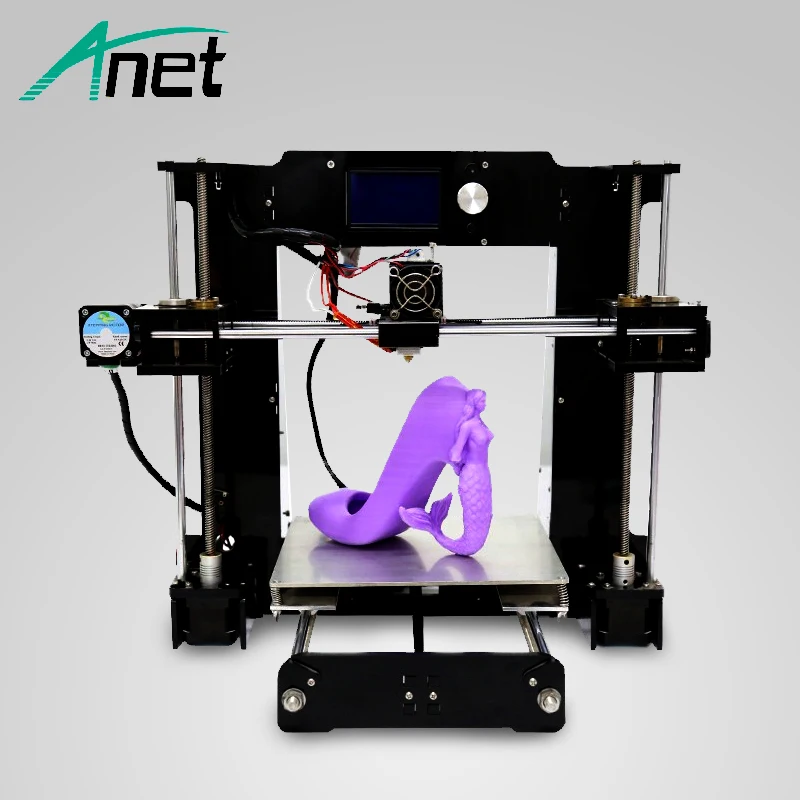
If you want to squeeze the highest resolution possible out of an FDM 3D printer, then the S5 is the machine to get. It can reach incredibly low XY resolutions of 0.02 mm. The Z-axis resolution is 0.1mm.
The pricing for the Ultimaker S5 can make people sweat. Luckily, there’s a cheaper version of the S5- the S3 (around $2000 cheaper. But it’s still pricey).
Here are some of the features that make the S5 more expensive.
The Ultimaker is similar to the Dremel in that it’s preferable to use filaments from the company itself. If not, you could find yourself with poor-quality prints.
If you want the best high resolution 3D printer in the FDM category, the Ultimaker S5 is a no-brainer.
- Dual Extrusion
- Picture perfect print quality
- A joy to use
- Will suck your wallet dry
Check Latest Price
SLA/Resin 3D Printers:
5.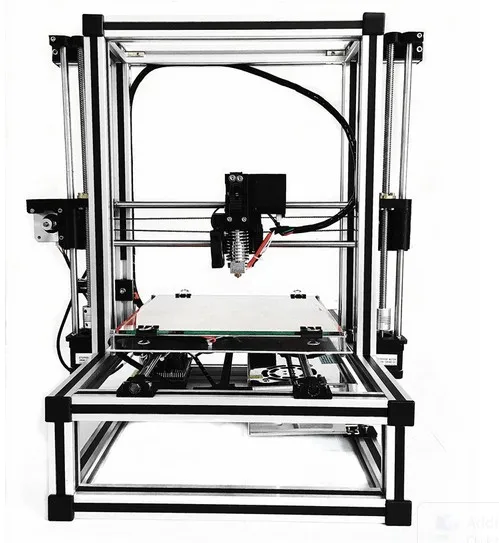 Elegoo Mars 2 Pro (Best Value)
Elegoo Mars 2 Pro (Best Value) 3D Printer Type: LCD | Materials: 405nm UV Resin | Build Volume: 129 x 80 x 160 mm
A big advantage of resin printers is the high resolution they produce at a fraction of the price. And the Elegoo Mars 2 is an excellent example of this.
The Mars 2 Pro comes with a 6.08 monochrome LCD with a 2K HD resolution which plays a huge factor in the quality of the prints.
The build quality is solid, with a CNC machined aluminum body. The 3D printer doesn’t budge, ensuring that the high-resolution prints maintain steady quality. Build size is small, as with most resin 3D printers.
Another advantage that resin printers have over FDM printers is their printing speed. They take about 1-2 seconds per layer, only. The Elegoo Mars 2 inherits this speed gene from the family of resin printers.
It prints miniatures with amazing precision. The XY resolution is 0.05 mm and the Z-axis resolution is just 0.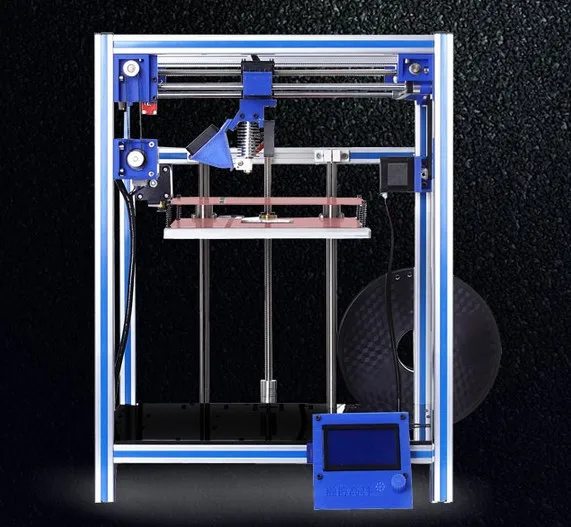 01 mm.
01 mm.
You’ll find the 3D printer great for home use. Make sure to keep it in a ventilated space as resin fumes are toxic (luckily some of the fumes are mitigated by the carbon filter in the printer).
The Elegoo Mars 2 is the Creality of the resin world and is always a worthwhile buy.
- Great prints
- Inexpensive
- Small build volume
Get Discount (Official Store)
Check Latest Price
6. Phrozen Sonic Mini 4K (Beginner Friendly)3D Printer Type: LCD | Materials: 405 nm UV Resins | Build Volume: 135 x 75 x 130 mm
4K is the rage these days. And Phrozen Sonic Mini capitalized on the trend with the best resin 3D printer under $400, the Sonic Mini 4K.
On the outside, the Sonic Mini 4K is made of plastic, which can lull you into thinking this 3D printer is cheap stuff. Don’t be fooled though; the printer is a value-packed powerhouse.
Don’t be fooled though; the printer is a value-packed powerhouse.
The build volume, like the Mars 2 Pro, is small. So the 3D printer is best suited for small prints. Design-wise, it looks similar to the countless resin printers out there in the market.
Let’s talk about the 4K screen. It’s the printer’s signature feature. It can produce staggeringly detailed prints at incredible speeds. 4K LCDs aren’t common in the 3D printing world, So an affordable 3D printer with this feature is a great boon for newcomers and professionals alike.
4K prints don’t look vastly different from 2K 3D printers. For some prints, the results aren’t noticeable, for others, the details are only subtly visible. If you’re a 3D printing connoisseur, however, you’d notice a difference. So the Mini 4K is suited for 3D printing veterans.
The XY layer resolution of the Mini 4K is 0.035 mm, and the Z axis resolution is 0.01 mm. The test prints of the Mini 4K were better than the test prints of the Elegoo Mars 2 Pro.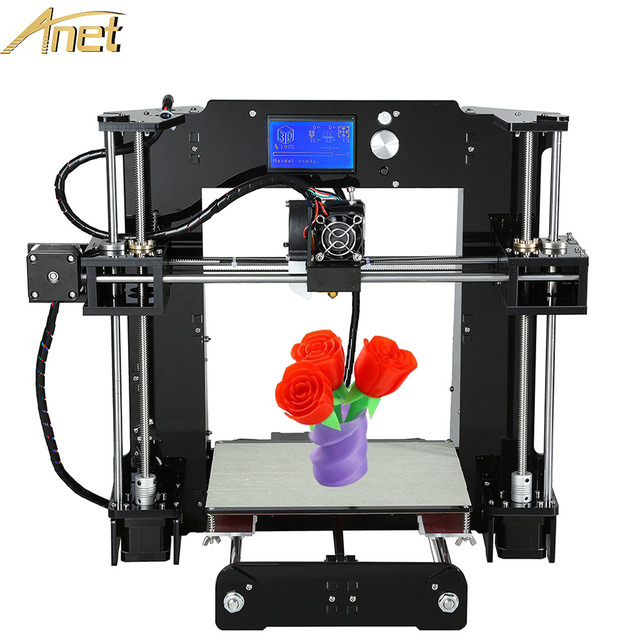
The printer works best with the company’s resin supply. If you buy third-party resin, you’ll have to play around with the layer settings to get an ideal print.
Get this machine if printing miniatures and jewelry are among your favorite 3D printing pastimes.
- One of the best 3D printer resolution in the market
- Excellent value for money
- Third-party resins may not work as well as Phrozen’s own resin supply
Click For Best Price (PHROZEN Store)
Check Latest Price
7. Anycubic Photon Mono X3D Printer Type: LCD | Materials: 405 nm UV Resins | Build Volume: 192 x 120 x 245 mm
Most SLA printers are tiny. But Anycubic Photon Mono X breaks the mold. With its large build volume and high-resolution printing capability, it’s a highly desirable precision 3D printer on our list.
The frustrating thing about most SLA printers are small build volumes, so it’s welcome when printers like the Mono X hit the market.
Sometimes bigger is better (and more beautiful), and that’s exactly the case with this printer. Not to objectify printers, but the printer with its yellow acrylic lid is a looker.
When we compared prints between the Mono X and Mini 4K, we found that the latter is better in terms of print quality – but only by a margin. For 99% of people, the difference would be negligible. The Mono has a similar resolution to the Mini – 0.05 mm XY resolution and 0.01 mm Z axis resolution.
The addition of the WiFi on this printer was a ridiculous option. With this, you can only connect Anycubic’s mobile app to the printer. You can’t connect the slicer on the computer to the machine.
For those who have a business to run and who like to print fast, the printer is a speed-demon, with a printer velocity of 60 mm/h.
Price withstanding, the Mono X checks all the boxes you’d want in a high resolution 3D printer for resin printing.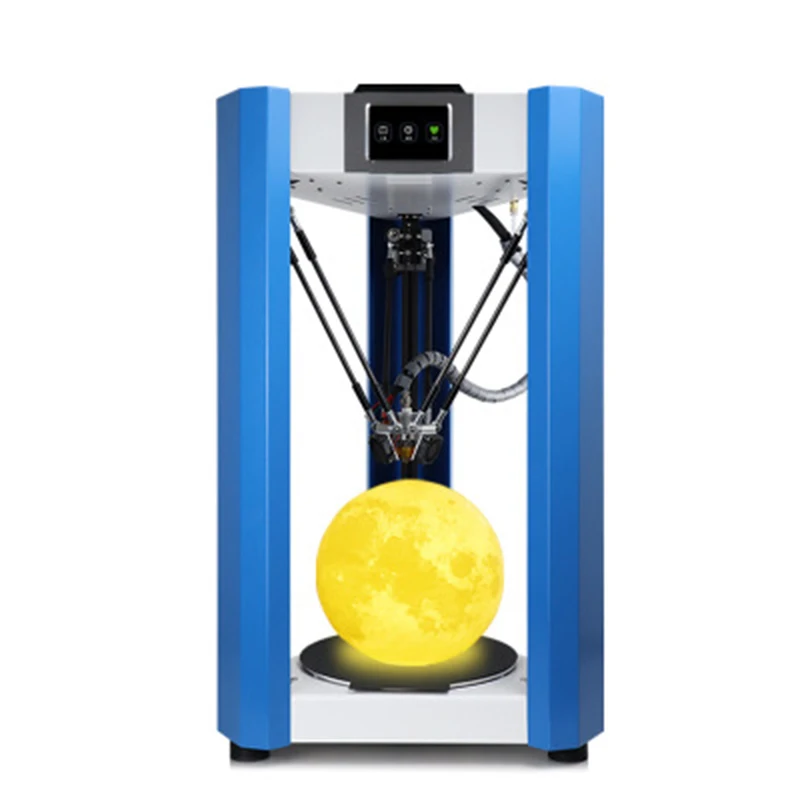
- Huge build volume
- Printer looks stunning
- Prints look stunning
- Expensive
Get Discount (Official Store)
Check Latest Price
8. Formlabs Form 3 (Most Accurate 3D Printer)3D Printer Type: SLA | Materials: Standard, Tough & Durable, Rigid, Engineering, Flexible, Jewelry, Dental & Medical Resins | Build Volume: 145 x 145 x 185 mm
If we had to give this printer a score, we’d give it a 11/10. Or a 20/10. The Formlabs Form 3 blows past all the previous machines we’ve reviewed so far, and words cannot begin to describe it.
The Form 3 is the resin equivalent of the Ultimaker S5 (though slightly cheaper). The capability of the machine far exceeds standard resin printers on the market.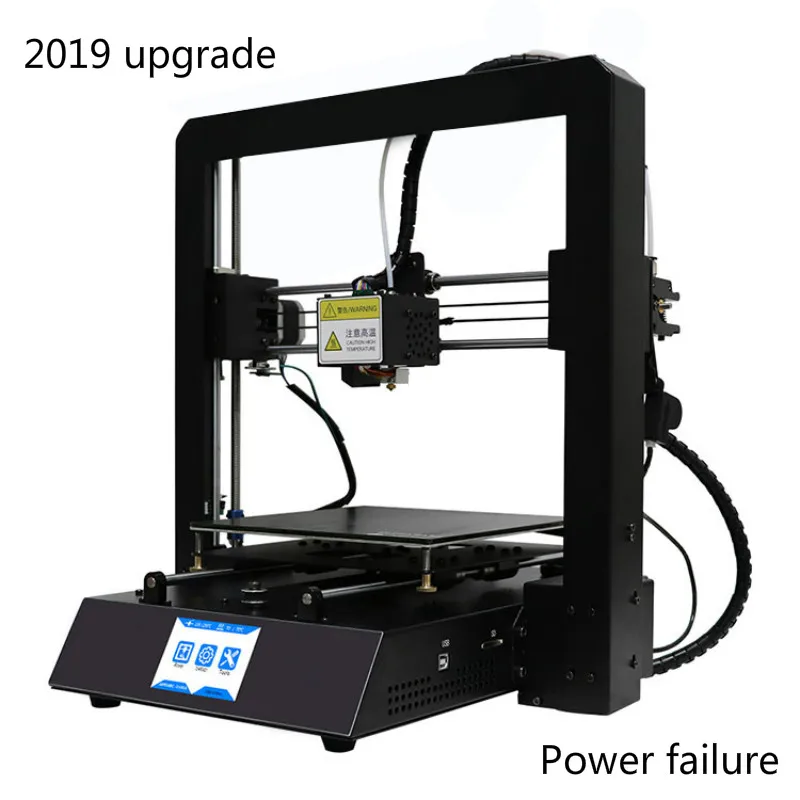
The build volume is a respectable 145 x 145 x 185 mm. You could always upgrade to the massive Form 3L, a newer release with dimensions of 335 x 200 x 300 mm.
The Form 3 uses technology few printers have in the market called Low Force Stereolithography. This is just another fancy sounding tech gimmick; we’ve had zero failed prints after days of testing and still counting. Incredible.
Resin for Form 3 comes in cartridges. You’ll have to purchase these from their site to refill your stock. The advantage of these cartridges is that you save yourself from poisonous resin.
There are also different types of resin – Clear, Color, Rigid 10K, and Model. Each looks and feels different, for example, Rigid 10K has a white, matte finish. On the other hand, Clear prints are translucent. They look really cool.
Printing is oh so easy on this machine, thanks to Formlab’s PreForm software. The software does most of the work for you. All you have to do is press print with minimal tinkering, thanks to its automatic processing capability.
It’s no surprise that printing on such a machine produces the most accurate, clean, precise models possible on a printer. Both the XY and the Z resolutions are around 0.025 microns.
The only downside to the printer is the expensive printer and cartridges. Hence this printer is best suited for business; they can earn their money back within weeks with the capability of the machine.
Formlabs Form 3 is the most accurate 3D printer on our list if you like being at the cutting edge of technology.
- Impeccable prints
- Variety of resin types
- Cutting edge software
- Expensive on all fronts
Check Latest Price
What is Resolution in 3D Printing? X, Y, and Z Resolution
Source: Youtube MiniacThe technical definition of resolution in 3D Printing is the shortest distance a 3D printer nozzle travels when depositing filament.
If you’ve ever purchased a phone or television (or maybe you made your girlfriend/boyfriend get them for you), you’d have come across the term resolution frequently. You’ll know that a 1080p screen has better picture quality than that of a 720p screen.
Likewise, in 3D printing, a high resolution 3D printer is by far the most important factor to consider when buying a printer if you want high-quality prints.
You’ll often hear terms like Z layer resolution and XY resolution in 3D printer reviews. The Z layer resolution is the height of a single layer in a 3D print. The X and Y resolution, on the other hand, is the shortest distance the nozzle travels in the horizontal direction.
Other Factors That Affect Print Quality
Source: Youtube NeedItMakeItMaterial
Not all materials print with the same quality: some materials produce higher quality prints than others.
Printer Stability
Vibrations during printing can hamper 3D printing accuracy. That’s why a sturdy, stable printer is important. All metal printers are sturdier than plastic printers.
That’s why a sturdy, stable printer is important. All metal printers are sturdier than plastic printers.
Type of Printing
Resin printing produces a higher resolution of prints than FDM printing.
Temperature
Different plastics print better at different temperatures. For ABS, extrusion temperatures of up to 240-250°C are ideal for accurate prints. PLA on the other hand benefits from temperatures of 200-220°C.
Slicer settings
Slicer settings play a big role in print quality, so make sure you play with these settings to get the perfect print. The layer height will have a big effect on print quality and print speed.
Nozzle size
The smaller the nozzle size, the more accurate and high resolution the print.
When Do High-Quality 3D Printers Make the Most Difference?
Source: Youtube MiniacHigh-quality 3D printers don’t make much of a difference on basic flat surfaces like a cube. A cheaper less accurate printer can even produce the same cube in a shorter period of time (because the nozzle diameter size is larger which means it deposits more filament in less layers).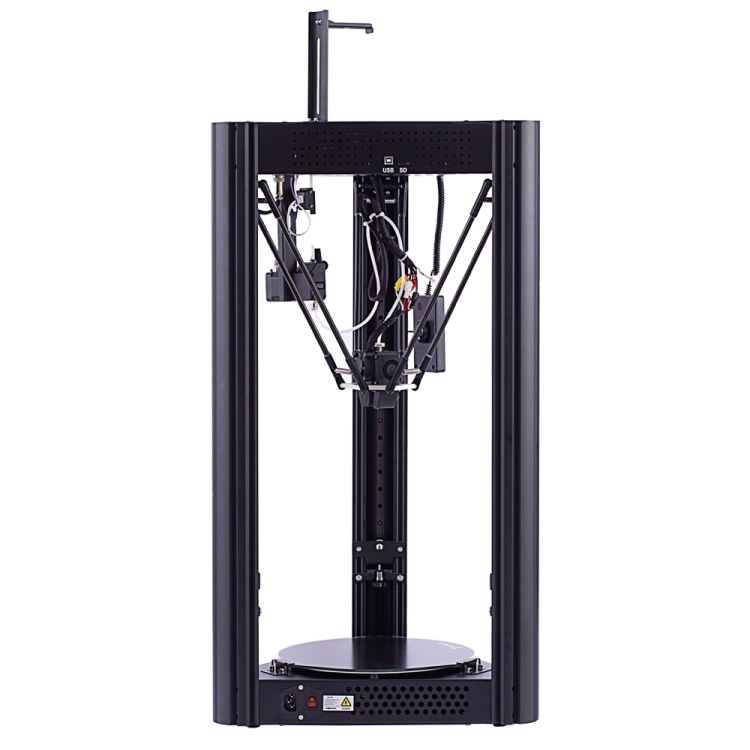
But if you love printing intricate miniatures, prints with curved or diagonal surfaces, or embossings and engravings, then the difference between a high resolution 3D printer vs a low-resolution printer is blatantly obvious.
Advantages and Disadvantages for High Resolution 3D Printers
High-quality 3D printers don’t make much of a difference on basic flat surfaces like a cube. A cheaper less accurate printer can even produce the same cube in a shorter period of time (because the nozzle diameter size is larger which means it deposits more filament in less layers).
But if you love printing intricate miniatures, or prints with curved or diagonal surfaces, or embossings and engravings, then the difference between a high resolution 3D printer vs a low-resolution printer is blatantly obvious.
Source: Youtube My Tech Fun
Advantages
Print Quality
Higher resolution printing naturally leads to smoother surfaces, finer details, and more accurate printing.
Efficient Workflows
High-res printing also leads to efficient workflows while being uncompromising on speed and quality.
More Variability in Creating Objects
These 3D printers can create the most intricate and complex of designs while maintaining quality.
Picture a model or a sculpture in your head. You can make a real-life version of that with the help of a high res 3D printer.
Disadvantages
Slow Speed
It’s not all sunshine, rainbows, and popcorn with high resolution 3D printers. A piece that may take an hour with a lower res 3D printer will take four hours to print on a high-res one.
More error-prone
The more the layers in a print, the more time it takes to print, and the greater the chances of a printing error.
Requires Precise Calibration
Your printer setting game needs to be tight to get the highest resolution prints possible. The extrusion and bed temperatures must be just right, and the right nozzle must also be selected.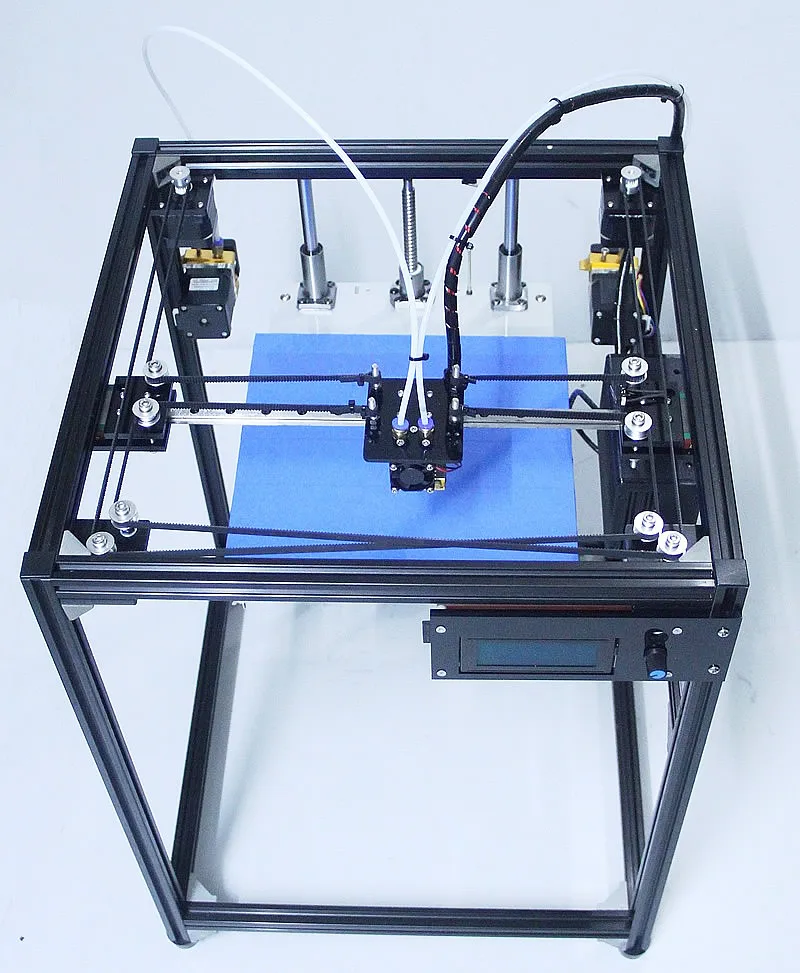
SLA VS FDM
Like we briefly touched on before, SLA (aka resin) 3D printers produce far more accurate prints than FDM printers.
SLA printers use UV or laser to cure the resin. These two light sources have different spot sizes. Anycubic Photon Mono X, a popular resin printer, has an XY resolution of 0.05mm and a Z layer resolution of 0.01mm. The resolution of most high-end consumer printers falls in this range.
On the other hand, FDM 3D printers don’t compare to resin printers. For example, one of the best FDM printers, the Prusa MK3S, has a Z layer resolution of only 0.05mm.
Choosing a liquid photopolymer for a 3D printer. Classification of materials for SLA/DLP 3D printing.
Contents:
- Introduction
- SLA Overview
- SLA Standard Resins
- Standard photopolymer resin - Standard
- Clear Photopolymer Resin - Clear
- Engineering photopolymer resins
- Rigid photopolymer resin - Tough (like ABS)
- Durable photopolymer resin - Durable (PP-like)
- Heat resistant photopolymer resin - Heat resistant
- Rubber-like photopolymer resin - Rubber-like (Elastic)
- Ceramic photopolymer resin - Ceramic filled (Hard)
- How to choose the right resin for your application
- Dental and medical SLA resins
- Medical Device Photopolymer Resin - Custom Medical Appliances (Class I Biocompatibility)
- Dental Long Term Biocompatible Resin (Class IIa Biocompatible)
- Biocompatibility class I vs biocompatibility class IIa
- Cast SLA resins
- Cast resin for jewelry making
- Generalized rules
Hello everyone, Friends! With you 3DTool!
This article compares photopolymer resins using Formlabs SLA 3D printing products –
Catalog of photopolymer 3D printers
Photopolymers from FormLabs
Detailed review of the Formlabs Form 3 3D printer
Introduction
The stereolithography prints plastic parts with high resolution, good fine detail and smooth surface. Due to the variety of photopolymer resins available for SLA, this technology is used in many different industries:
-
"Standard" photopolymers are used for prototyping
-
Engineering photopolymers have certain mechanical and thermal properties
-
Dental and medical photopolymers have biocompatibility certificates.
-
Cast photopolymers have a zero ash content after burning.
SLA 3D Printing Resin Overview
SLA uses a laser to cure a liquid photopolymer resin. This process is called photopolymerization. Various combinations of polymers and other additives that are part of the resin allow you to get different material properties.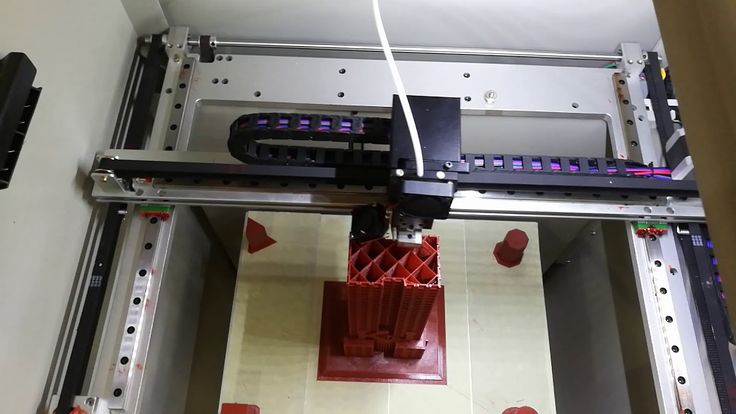
The main advantages and limitations that are common to all resins in SLA 3D printing are:
Benefits:
Weaknesses:
Base Resins for SLA
Post-Processing SLA/DLP 3D Printing Article
Standard photopolymer resin - Standard
Standard resins produce parts with high stiffness, detail and a smooth surface. The low cost of resins, from $250 per liter, makes them ideal for prototypes.
The color of the resin also affects its properties. For example, in FormLabs products, gray resin is suitable for models with fine details, and white resin for parts that require the smoothest possible surface.
Benefits of using Standard grade resins:
Cons Standard:
Also included in the class of "Standard" photopolymer resins from FormLabs is the Color KIT - a set of special dyes and "Color Base" photopolymer resin for mixing and obtaining a variety of color solutions. This eliminates the need for painting parts after 3D printing.
This eliminates the need for painting parts after 3D printing.
FormLabs Engineering Photopolymer Resins
Engineering resins have a range of properties for injection molded plastics.
All engineering resins require additional UV curing, such as using the Form Cure, to achieve their maximum properties.
Tough photopolymer resin - Tough (ABS equivalent)
Tough resin was developed for models that need to withstand high loads and be durable.
This material produces strong, shatter-resistant parts and functional prototypes such as snap-on housings.
Pros:
Cons:
Ideal for: functional prototypes, mechanical parts
Durable photopolymer resin - Durable
Durable resin is a wear-resistant and flexible material with mechanical properties similar to polypropylene.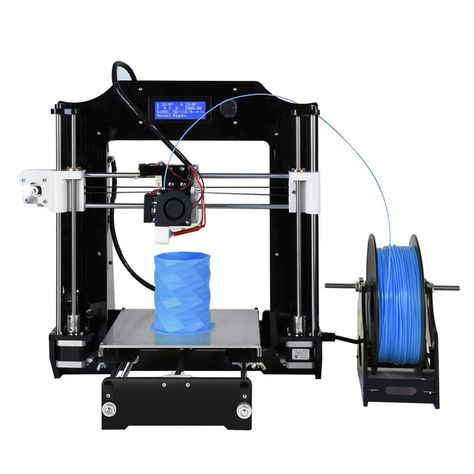
Durable photopolymer produces models with a smooth glossy surface and high resistance to deformation.
Durable Resin is ideal for:
- Bushings and bearings;
- Various functional compounds
Pros:
Cons:
-
Not suitable for thin wall parts (recommended minimum wall thickness 1mm)
-
Low heat distortion temperature
-
Low flexural strength (lower than hard resin)
Ideal for: functional prototypes.
Refractory Photopolymer Resin - Formlabs High Temp Resin
The heat resistant resin is ideal for parts that require high temperature resistance and operate at high temperatures.
Formlabs High Temp Resin provides the highest melting point (HDT): 238°C at 0.45 MPa.
The resin should be used to print detailed, accurate prototypes with high heat resistance.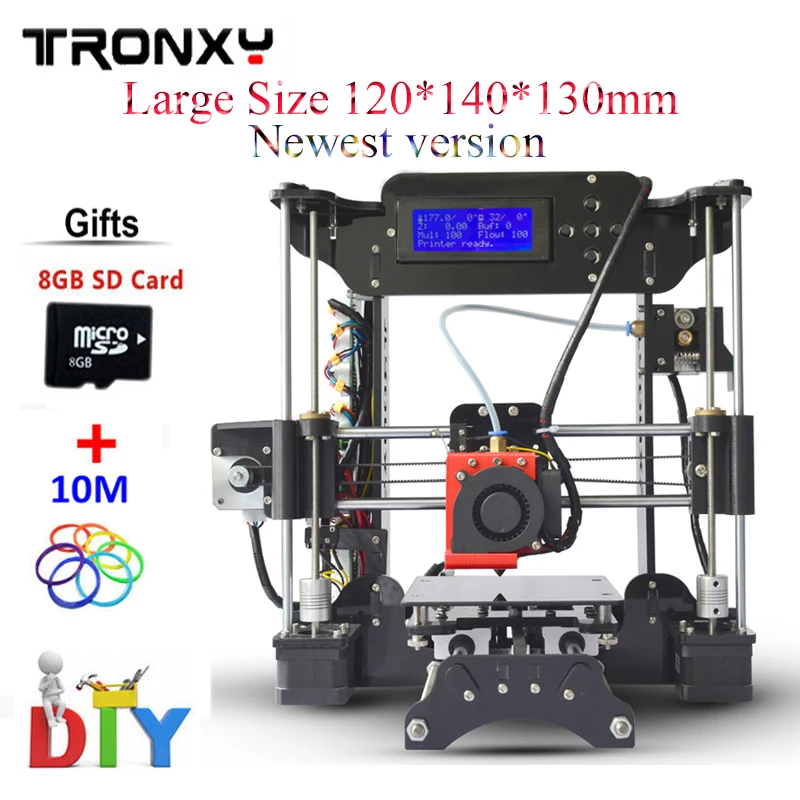
Pros:
Cons:
Flexible Resin
Rubber-like resin allows flexible parts to be made. This material has a low tensile strength and high elongation at break and is well suited for parts that will be bent or compressed.
It can also be used to add ergonomic features to multi-material assemblies such as: dies, wearable prototypes, handles, pads and grips.
Pros:
-
High flexibility (high elongation at break)
-
Low hardness (simulates 80A durometer rubber)
-
High impact resistance
Cons:
-
Doesn't have all the properties of real rubber
-
Requires extensive support structures
-
Material properties deteriorate over time as the part is exposed to ultraviolet radiation (sunlight)
-
Not suitable for thin wall parts (recommended minimum wall thickness 1mm)
Ideal for flexible prototyping.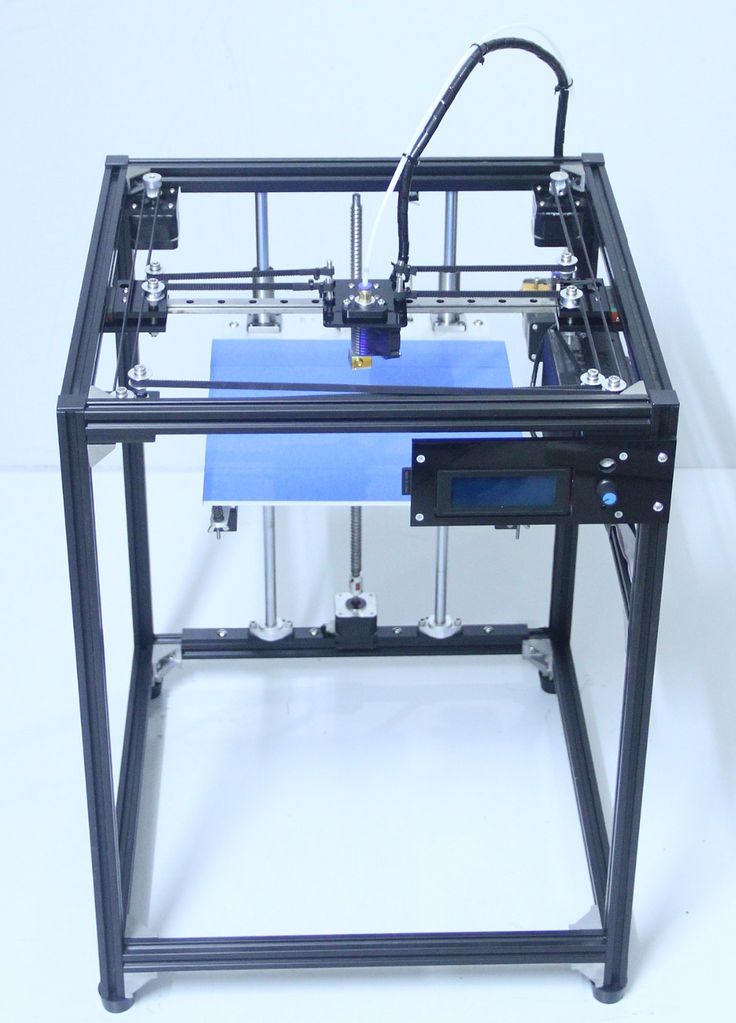
Ceramic photopolymer resin - Rigid Resin
This resin is reinforced with glass, which provides very high rigidity and a polished surface. The polymer is very resistant to deformation and is excellent for 3D printing thin elements.
Ideal for: molds and tooling, jigs, manifolds, retainers, electrical and automotive fixture housings
Thermal management components printed with SLA ceramic (hard) resin. Image credit: Formlabs
How to choose the right resin for your application
The table below shows the main mechanical properties of photopolymers for SLA:
Source: Formlabs
Standard resin ( standart ) has high tensile strength but is very brittle (very low elongation at break) so it is not suitable for functional parts. The ability to create a good part surface makes it ideal for visual prototypes and art models.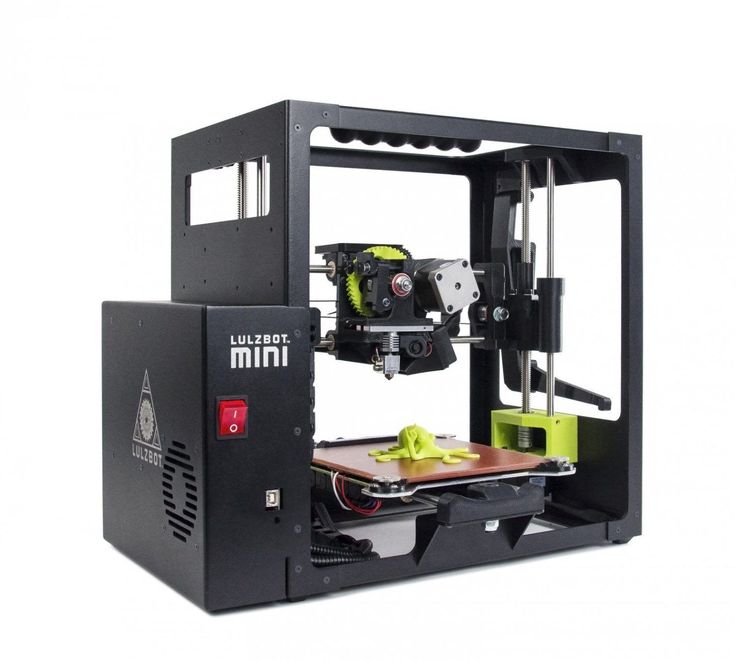
Durable ( durable ) resin has the highest impact strength and elongation at break of any other SLA material. Best suited for prototyping parts with moving parts and latches. It lacks, however, the strength of thermoplastic 3D printing materials such as SLA nylon.
tough tough resin is a compromise between the material properties of tough and standard resin. It has a high tensile strength, so it is best suited for rigid parts that require high hardness.
heat resistant resin ( heat resistant ) can withstand temperatures above 200 o C, but has poor impact strength and is even more brittle than standard resin.
ceramic ( ceramic reinforce ) resin has the highest tensile strength and flexural modulus, but is brittle (poor elongation at break and toughness). This resin is preferred for thin wall parts that require increased rigidity.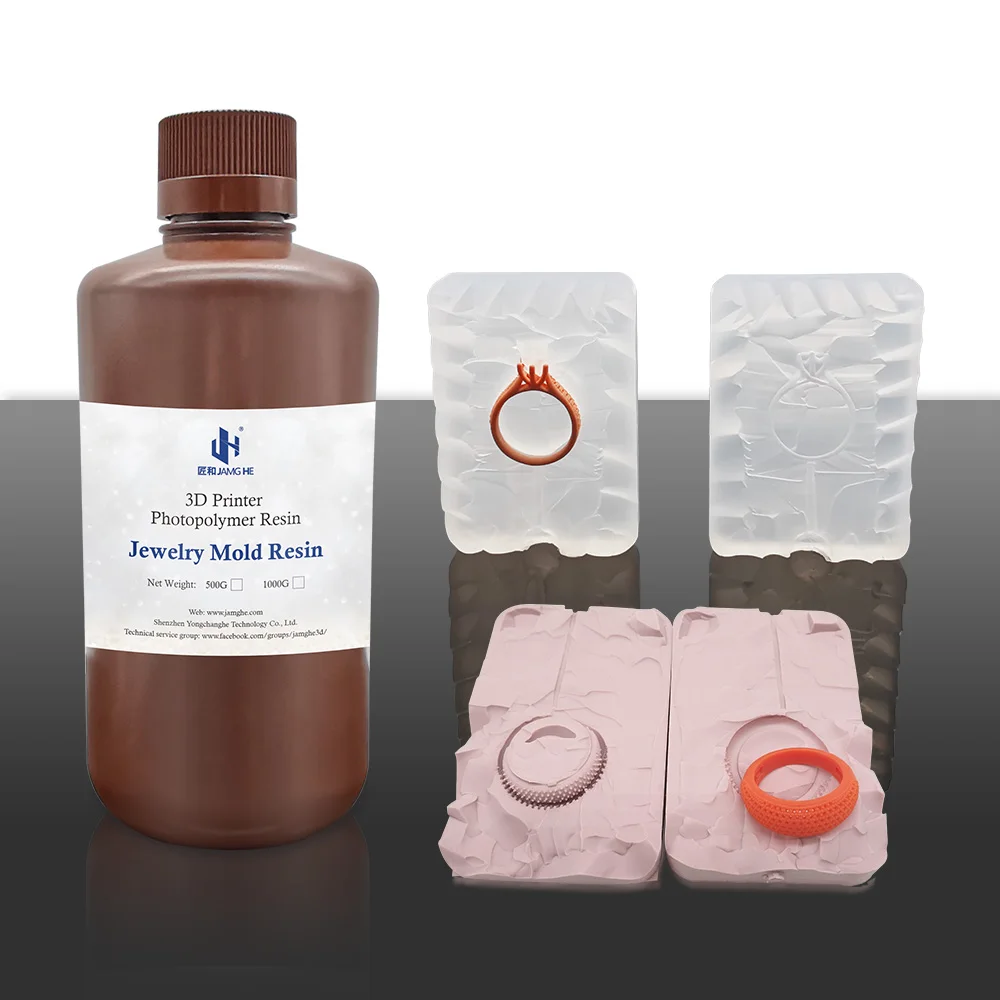
The graphs below compare the mechanical properties of the most common SLA materials visually:
Comparison chart for elongation at break and toughness for common SLA printing specifications and standard media. Image courtesy of Formlabs.
Stress-strain curves for conventional SLA technologies and standard materials. Image credit: Formlabs
Pros:
Cons:
- Moderate wear and tear resistance
Ideal for: Surgical aids and appliances
Dental Long Term Biocompatible Resin - Dental Long Term (Class 2A biocompatible)
0114
These resins are specially formulated for long term dental fixtures. Class 2A biocompatible resins can come into contact with the human body for up to a year.
High resistance to breakage and wear make this resin ideal for making rigid cotter pins or retainers.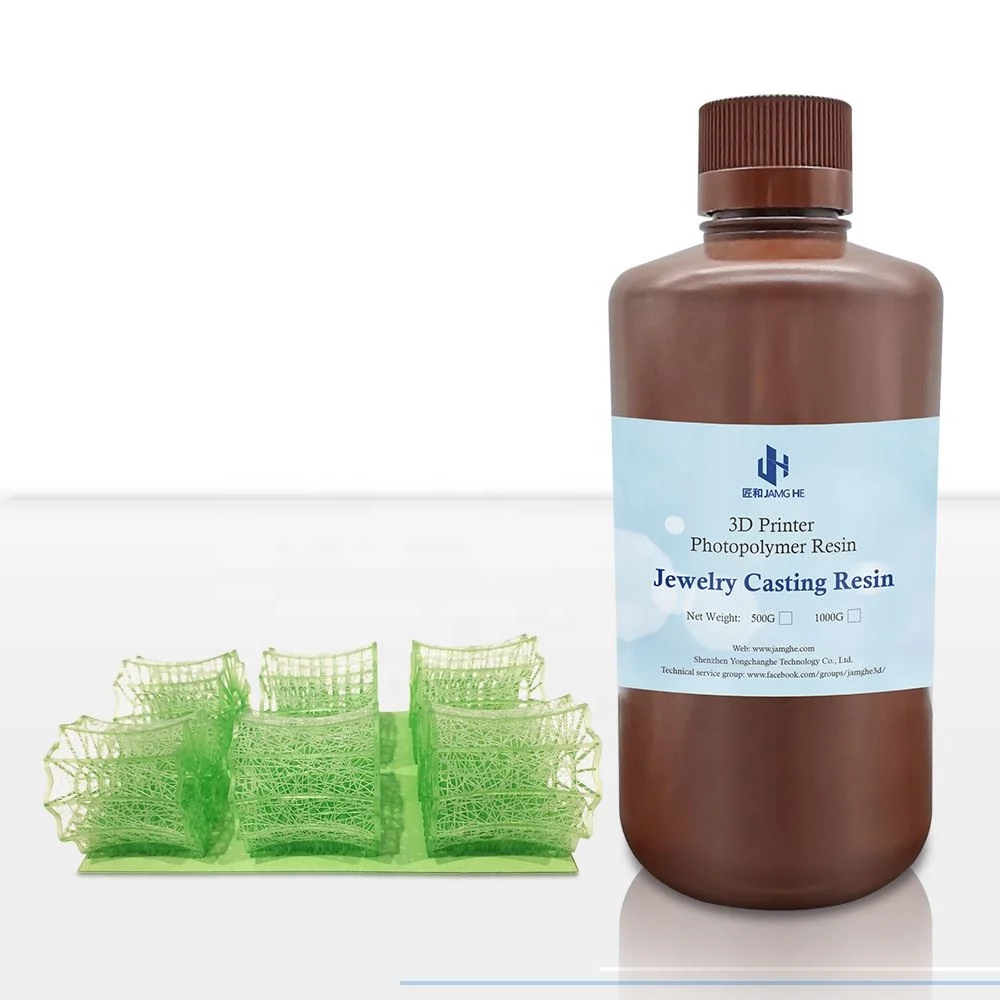
Pros:
Cons:
-
High price
Ideal for: durable dental instruments, fracture and wear resistant medical parts, rigid cotter pins, retainers
What is the difference between class 1 and class 2a biocompatibility?
Class 1 biocompatibility rules apply to materials that are allowed to be used for:
-
non-invasive devices that come into contact with intact skin
-
devices for temporary use or short-term use in the mouth or ear canal or in the nasal cavity
-
reusable surgical instruments
Class 2a biocompatibility rules apply to materials that are allowed to be used for:
-
devices that come into contact with bodily fluids or open wounds
-
devices used to introduce substances into or remove substances from the human body
-
invasive short-term devices such as invasive surgical items
-
long-term implantable devices placed in the teeth
Photopolymer resins in SLA 3D printing for jewelers
Jewelry resins
This material allows you to print models with fine details and a smooth surface without leaving ash or residue after burning.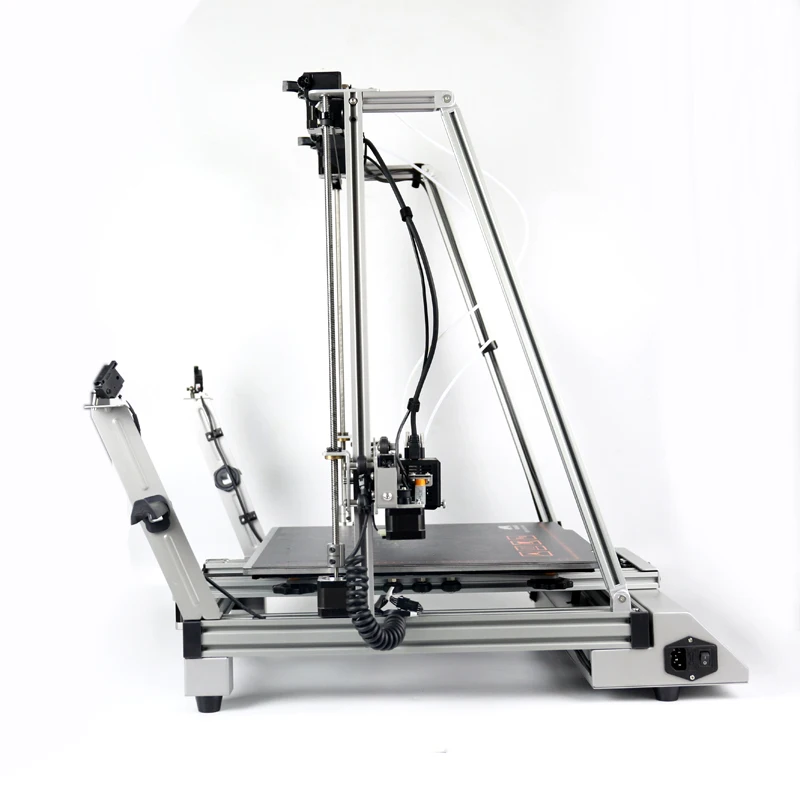
Cast resin allows you to get the finished product directly from design to precision casting with just one 3D printed part. It is suitable for making jewelry and other small and complex components.
Pros:
Cons:
Ideal for: investment casting, jewelry making
SLA/DLP 3D printer catalog
Photopolymers from FormLabs
Post-Processing SLA/DLP 3D Printing Article
Well, that's all we have! We hope this article was useful for you!
You can order Formlabs SLA 3D printers or ask your questions and find out the status of your order, you can
- Email: [email protected]
- By phone: 8(800)775-86-69
- Or on our website: http://3dtool.ru
-
Don't forget to subscribe to our YouTube channel:
Subscribe to our groups in social networks:
In contact with
Choosing the best 3D printer for printing miniatures
3DPrintStory Reviews Choosing the best 3D printer for printing miniatures
The use of 3D printers for printing game miniatures is gaining more and more popularity today. As the price of 3D printers continues to fall, it is likely that the demand for 3D printed game miniatures will only continue to rise.
As the price of 3D printers continues to fall, it is likely that the demand for 3D printed game miniatures will only continue to rise.
If you pick the right 3D printer, you can get amazing 3D models for your board games or to put an inspirational figurine from your favorite game on your desktop.
Today's desktop 3D printers have become reliable, easy to use and provide decent quality finished products.
How to choose a 3D miniature printer?
There is a wide range of desktop 3D printers that can be used to print miniatures in 3D at home. And if you study the market a bit, or at least the options below, you can get great detailed 3D models.
With the right 3D printer, you can print your own figurines and even create your own board games.
If you don't want to design 3D models of figurines from scratch (and this will really require some skills and time from you), then you can find interesting 3D models on sites with free 3D printable models. After downloading the model, you can immediately print it or edit it before 3D printing for your own needs. We also recommend that you familiarize yourself with interesting 3D models from Dutchmogul. Perhaps in his wonderful collection you will find something interesting for yourself.
After downloading the model, you can immediately print it or edit it before 3D printing for your own needs. We also recommend that you familiarize yourself with interesting 3D models from Dutchmogul. Perhaps in his wonderful collection you will find something interesting for yourself.
To get the same level of detail as the thumbnails above, your 3D printer must meet certain criteria. The most important feature of a 3D printer to consider is the level of detail it can reproduce. This criterion is formed based on the following parameters:
Nozzle diameter
To create a 3D miniature, heated plastic is extruded through a hole. Orifice is the diameter of the nozzle. Make sure the 3D printer nozzle size is less than 0.4mm.
XY Movement Accuracy
The X and Y axis movement accuracy of the 3D printer head should be taken into account. To get a more detailed model, you need to reduce the layer thickness. However, the low thickness means that 3D printing will take longer.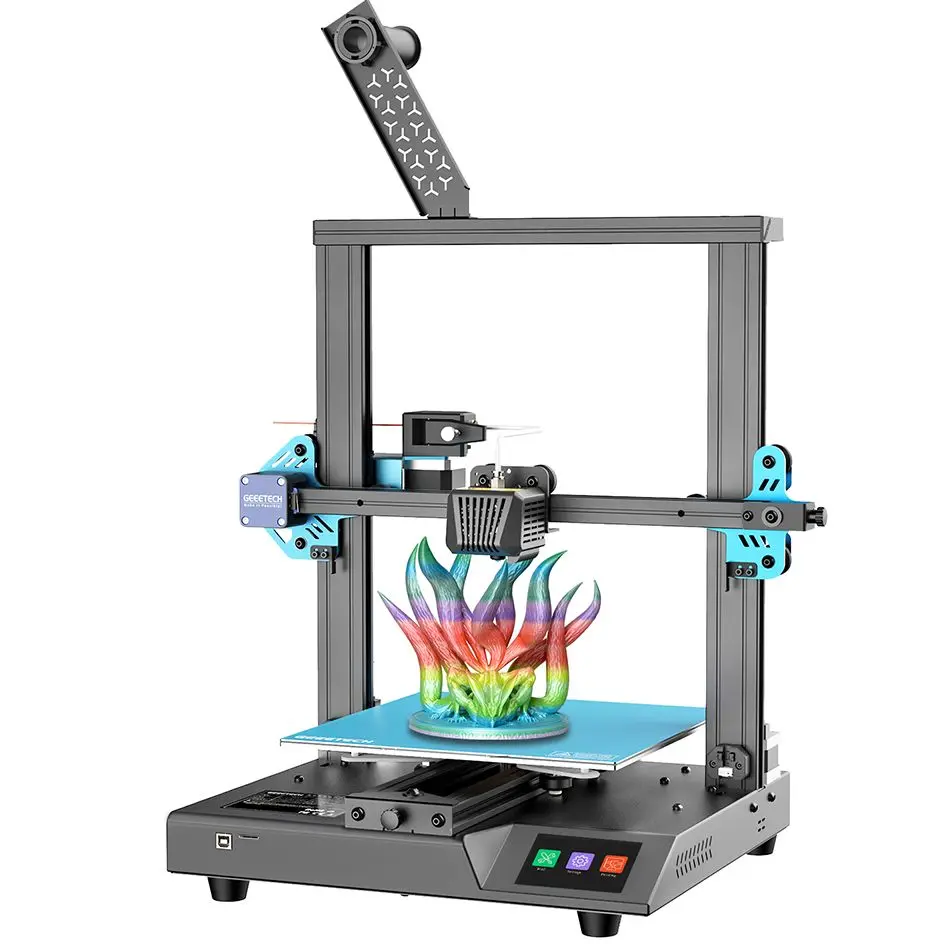 In order to print a detailed miniature, you will most likely need a 3D printer that can print with layer thicknesses of 100 microns (0.1 mm) or less.
In order to print a detailed miniature, you will most likely need a 3D printer that can print with layer thicknesses of 100 microns (0.1 mm) or less.
Material type
The most common materials used in 3D printers are ABS or PLA. To get a good surface, after 3D printing, it should be post-processed. If you are using ABS plastic, you can sand the miniature and steam it in acetone to get a smooth surface. It is also worth paying attention to PETG plastics, which are gaining more and more attention and positive user reviews.
Thumbnail size (scale)
If you want to start 3D printing game miniatures, think about the size you would like to get.
A 28 mm (scale ~ 1:58) or 54 mm (scale ~ 1:32) miniature can be made with a standard desktop 3D printer that melts plastic filament. To make a smaller miniature, you will need an SLA Resin printer, which uses liquid resin and strengthens it.
In addition to the figurine, you can also print larger models.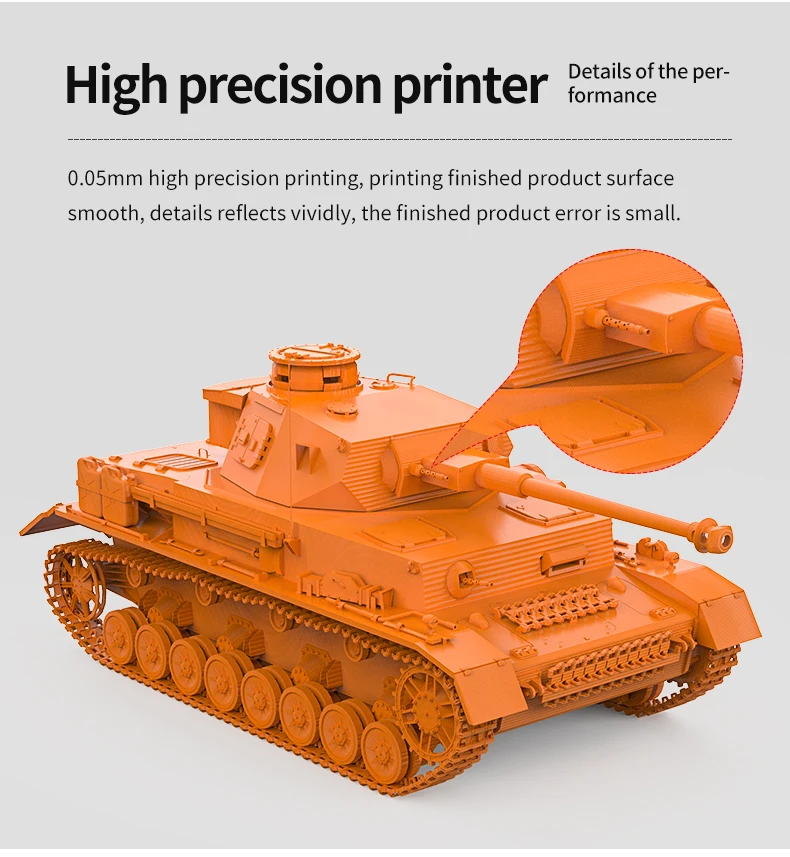 3D printing large models such as houses, huts, castles, trees, and tanks will require more expensive 3D printers that provide faster speeds with good 3D print quality. But there is an important point in the choice. It is better to choose high-quality 3D printing than a large one. You can always separate larger models for printing and then join them together using the same adhesive. The result will be much better than lower quality 3D printing on a 3D printer with a large workspace.
3D printing large models such as houses, huts, castles, trees, and tanks will require more expensive 3D printers that provide faster speeds with good 3D print quality. But there is an important point in the choice. It is better to choose high-quality 3D printing than a large one. You can always separate larger models for printing and then join them together using the same adhesive. The result will be much better than lower quality 3D printing on a 3D printer with a large workspace.
HICTOP CR-10S 3D printer
Value for money, the Hictop CR-10S is one of the best and most affordable budget 3D printers on the market. The Prusa i3 3D printer was taken as the basis for the design.
The Hictop printer uses quality materials for the power supply, motherboard and motion control systems. The metal framework is a rigid and strong design.
The Hictop printer will arrive unassembled, but assembly is easy. You will have to essentially screw in four bolts and connect the necessary wires. That is, you can proceed directly to 3D printing almost immediately after purchase.
That is, you can proceed directly to 3D printing almost immediately after purchase.
The "S" at the end of the CR-10S stands for two Z-axis lead screws and stepper motors.
Dual axis system improves extruder movement accuracy. As a result, you naturally get more accurate 3D printing overall. This is an excellent inexpensive 3D printer that is suitable for 3D printing miniatures and figurines for board games.
The Hictop 3D printer has a mechanism to control the remaining amount of plastic. If the plastic runs out, the printer will go into pause mode and after feeding new material, you can continue printing from the area where you left off. This is a particularly relevant feature for printing large-scale 3D models.
These 3D printers are quite popular, so you will find a lot of information and tips on how to use them online. In addition, thanks to an active community, the Hictop CR-10S has a large number of modifications and upgrades that you can implement yourself and improve its already decent 3D printing quality.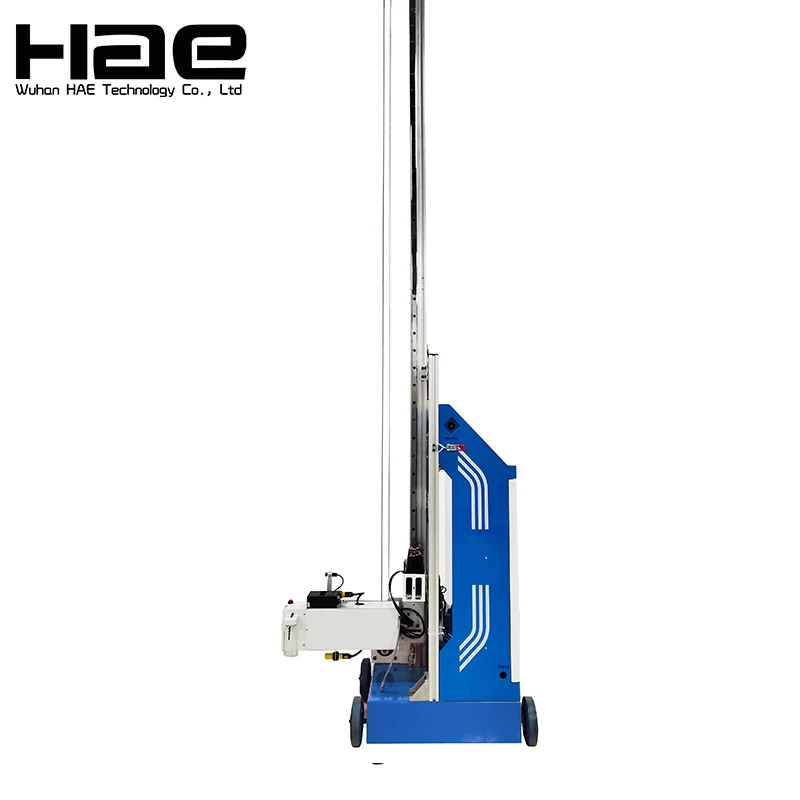
Hictop CR-10S is a high-quality and affordable 3D printer that is definitely suitable for 3D printing miniatures and figures of characters from your favorite games or movies.
FLASHFORGE CREATOR PRO 3D printer
FlashForge 3D Printer Creator Pro took inspiration from Makerbot Replica.
A nice feature of the FlashForge 3D printer is that it includes all the custom enhancements from Makerbot. These improvements include:
- Metal worktable supports. Thus, the working table became more stable during heating and assembling.
- Plastic-coated knobs for easy workbench calibration.
- The Central Processing Unit (CPU) supports Sailfish firmware which allows automatic calibration. In addition, the CPU helps regulate heat and delivers higher quality 3D prints.
The above features make the Creator Pro an excellent miniature 3D printer.
In addition, this 3D printer is made in a closed case, which allows you to print ABS plastic with much less difficulty.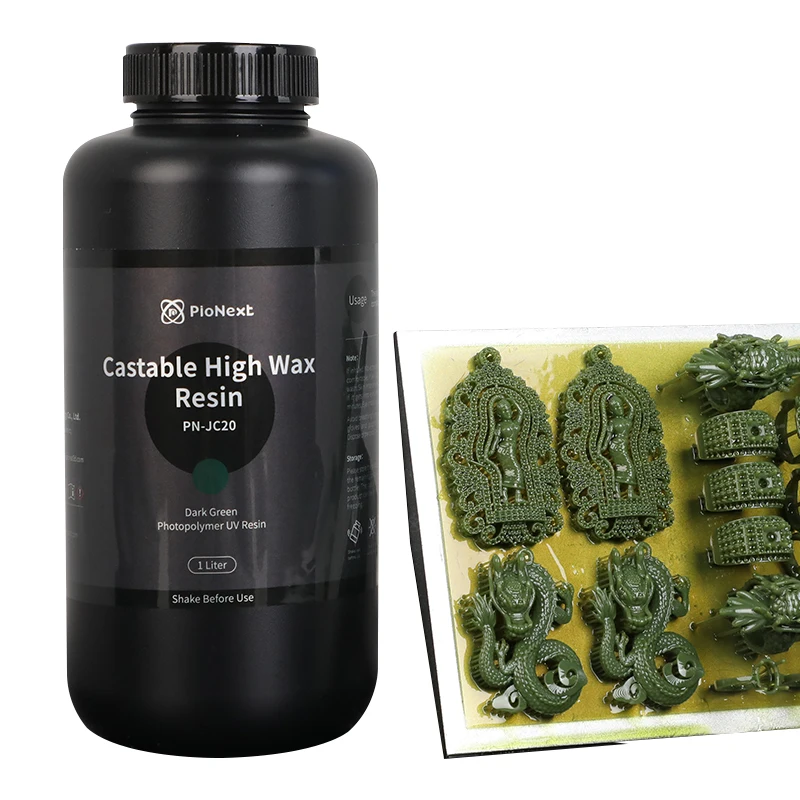
With Creator Pro, you can print two colors of media at the same time. If you plan to paint the finished model in the future, then you don’t really need this feature, but in general it gives you much more options than the standard analogues with one extruder.
Since the Creator Pro is based on the Makerbot Replica, there is a lot of information available on the Internet about this 3D printer.
3D printer SINDOH DP200 3DWOX
If you are looking for a reliable 3D printer for printing miniatures, then you should pay attention to Sindoh DP200 3DWOX. This is the best choice if you want to make 3D mini figures.
This 3D printer is easy to use, suitable even for beginners in the world of 3D printing. Below are some of its features:
- 3D printing table covered with aluminum PTFE.
- 3D printing resolution is 50 microns (0.05 mm).
- Equipped with a high efficiency particulate air filter and a closed chamber for 3D printing, which is especially good when using ABS plastics.

- Easy to use material cartridge chamber.
- Sindoh excels at printing minifigures in high detail.
One of the disadvantages of the Sindoh DP200 printer is that it can only use manufacturer's filament. Consequently, you will pay more money for cartridges because you will not be able to use materials from other manufacturers. The price of these cartridges, of course, is higher than analogues.
Otherwise, the Sindoh DP200 3DWOX 3D printer is a great option for high quality 3D printing of detailed models.
DREMEL DIGILAB 3D printer
The use of SLA technology for 3D printing helps to obtain miniature products of very high quality. SLA also helps print miniature parts as small as 28mm. The price of this wonderful 3D printer is comparable to the cost of a laptop.
SLA printing differs from FFF printing in the very essence of the processes. During SLA 3D printing, liquid resin is baked using a UV laser. The formation of the part looks like a gradual lifting of the finished model and a bath with liquid material.
Industry-intensive stereolithographic 3D printers are now available at home! The Dremel Digilab 3D printer has proven itself as a hobby printer, which differs from expensive industrial analogues in its exceptionally smaller workspace.
Key features of the Dremel Digilab 3D printer:
- The minimum wall thickness of the 3D model is 25 microns (0.025mm).
- Faster 3D printing compared to FFF 3D printers.
- Excellent surface quality of the finished 3D model.
Digilab is a great SLA 3D printer. It is easy to use and, according to user reviews, reliable.
With this 3D printer, you can use resins to make investment casting molds. It can also be used to make jewelry by casting metals.
Some disadvantages of using SLA for 3D printing:
- It's expensive. The resin needs to be updated, as over time it ages and loses the necessary properties.
- Resins require maintenance. Make sure you start 3D printing only after the balloons created by adding resin to the tank are gone.

Learn more




